The Real Secret to Light-as-Air Gnocchi (It’s Not Just the Recipe)
I still remember my first real go at making gnocchi. It was in a bustling professional kitchen, and I was handed a sack of potatoes, a ricer, and some very simple, very stern advice: “The recipe is in your hands, not on a piece of paper.” Honestly, I had no idea what that meant at the time. My first attempt was a dense, gluey mess. The second was better, but still tasted like a tough potato noodle.
In this article
It took so many tries, feeling the dough and truly understanding the ingredients, before I finally made a batch that was good enough to serve. That lesson has stuck with me ever since. Gnocchi aren’t just a simple mix of potato and flour; they’re a craft. Making them well is all about getting the science of starch and gluten to work for you. It’s about learning to develop a light touch. This guide is built on all those lessons, the successes and the failures. We’re going to nail the perfect, pillowy dumplings from scratch.
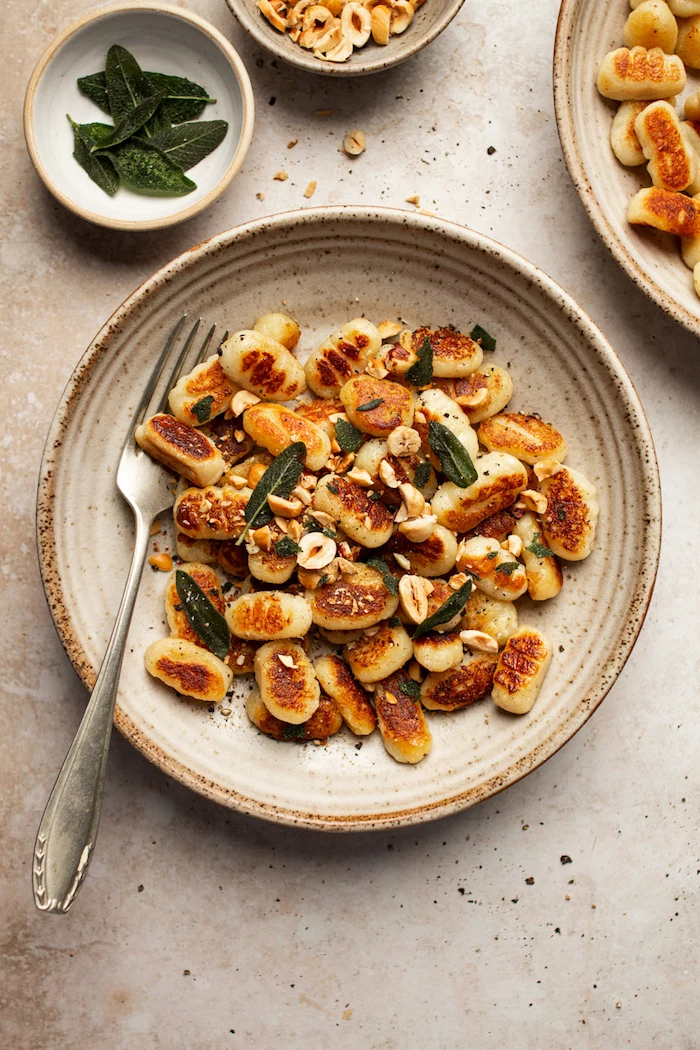
First Things First: Mastering the Classic Potato Gnocchi
Everything starts here. If you can get potato gnocchi right, all the other fancy variations become way easier. Its simplicity is what makes it tricky—every single choice, from the potato you pick to how you mix the dough, makes a huge difference. With so few ingredients, there’s nowhere to hide.
Why It Works: The Simple Science
So, what’s actually happening in that bowl? You’re basically playing a game with two things: potato starch and wheat gluten. The goal is simple: get all the light, fluffy texture from the starch while creating as little chewy gluten as possible.
Choosing Your Potato: The Most Important Decision You’ll Make
This is where most people go wrong right out of the gate. You absolutely need a starchy, mealy potato that’s low in moisture. In the US, Russets (or Idaho potatoes) are the undisputed champs. Waxy potatoes, like red bliss or new potatoes, are your enemy here. They hold way too much water and have the wrong kind of starch, which turns into a sticky, gummy paste when you try to make dough. That forces you to add a mountain of flour, and more flour means dense, heavy gnocchi. No thank you.
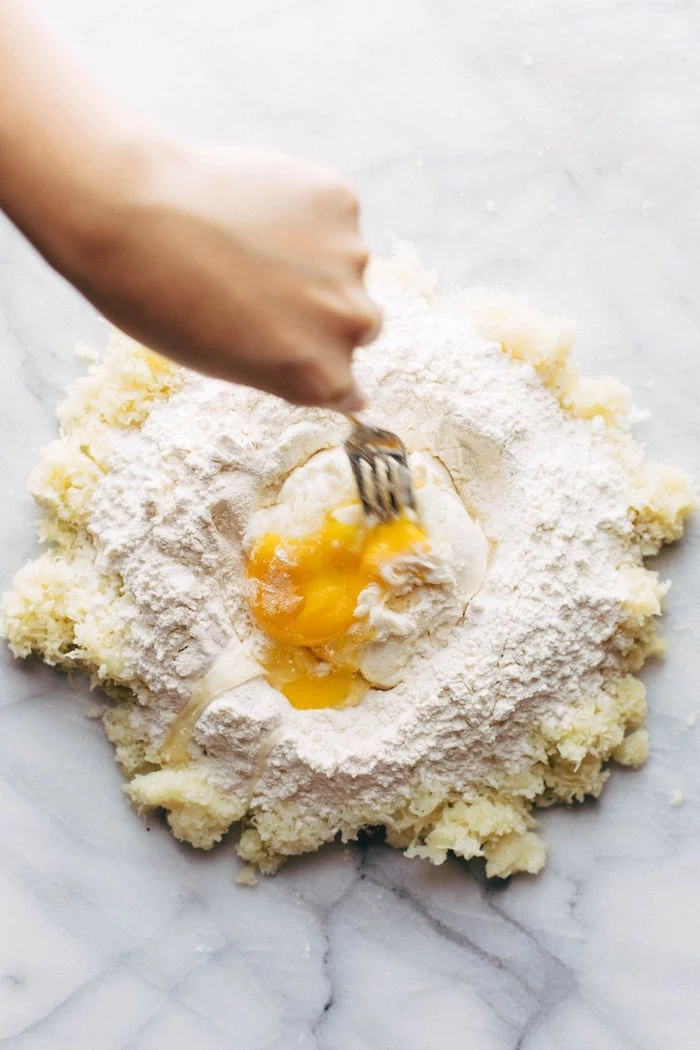
Think of it this way: starchy potatoes have cells that swell and separate easily when cooked, creating a dry, fluffy texture. That fluffiness is the key. Waxy potatoes have cells that are practically glued together, resulting in a dense, wet mess.
Cooking the Potatoes: Your Mission is to Keep Them DRY
Water is the villain of our story. Any extra water in the potatoes has to be balanced out with extra flour, which, as we know, leads to tough dumplings. The best way to cook them is to boil them whole, with the skins on. The skin acts like a little raincoat, preventing them from getting waterlogged.
By the way, some people swear by baking the potatoes directly on an oven rack. This does yield a slightly drier, fluffier potato, which is awesome. The downside? It can take over an hour. Boiling is much faster, usually around 25-35 minutes, and it’s how most professional kitchens do it for efficiency. As long as you boil them whole with the skin on, you’ll get great results.
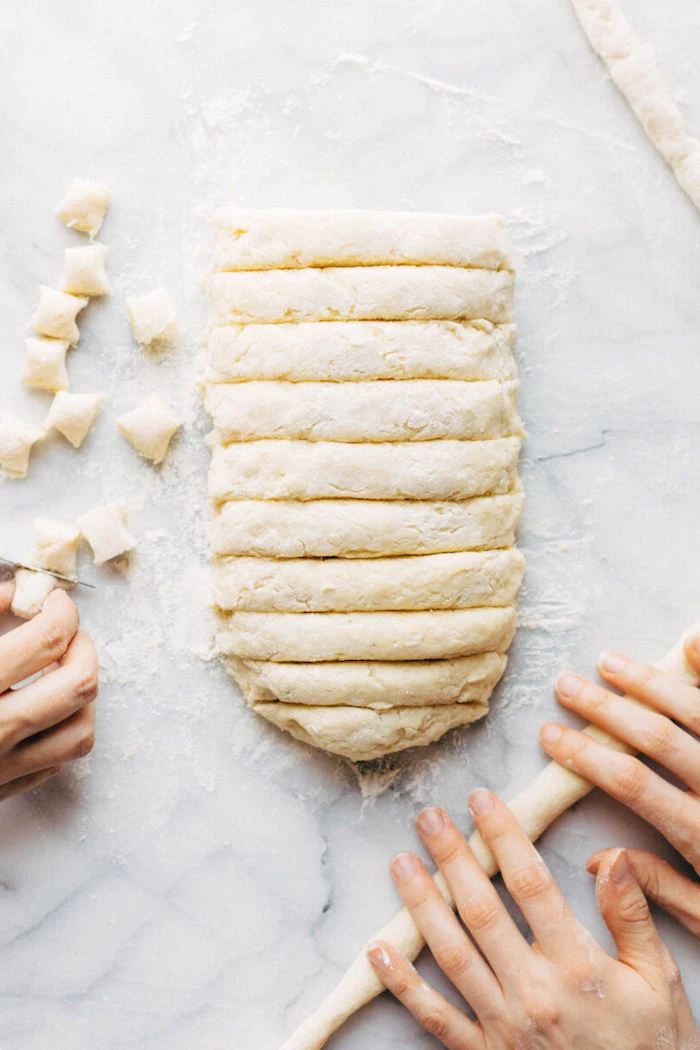
Let’s Talk Flour and That Pesky Gluten
Flour gives the gnocchi structure, but the moment it gets wet and you start working it, gluten develops. Gluten is fantastic for chewy sourdough bread, but it’s the absolute worst for delicate gnocchi. Our goal is to use just enough flour to form a dough and then stop. The less you work it, the better.
You might see recipes calling for fancy Italian “00” flour. It’s great if you have it, creating a silky texture. But to be frank, I’ve made thousands of batches with regular all-purpose flour and they’re fantastic. Don’t let a lack of special flour stop you. Your technique is way more important.
The Great Egg Debate: To Add or Not to Add?
This is a hot topic. Some traditional recipes contain no egg at all. The result is the purest, most tender gnocchi you can imagine, with nothing but potato flavor. The catch? The dough is incredibly delicate and much harder to work with. It’s not very forgiving.
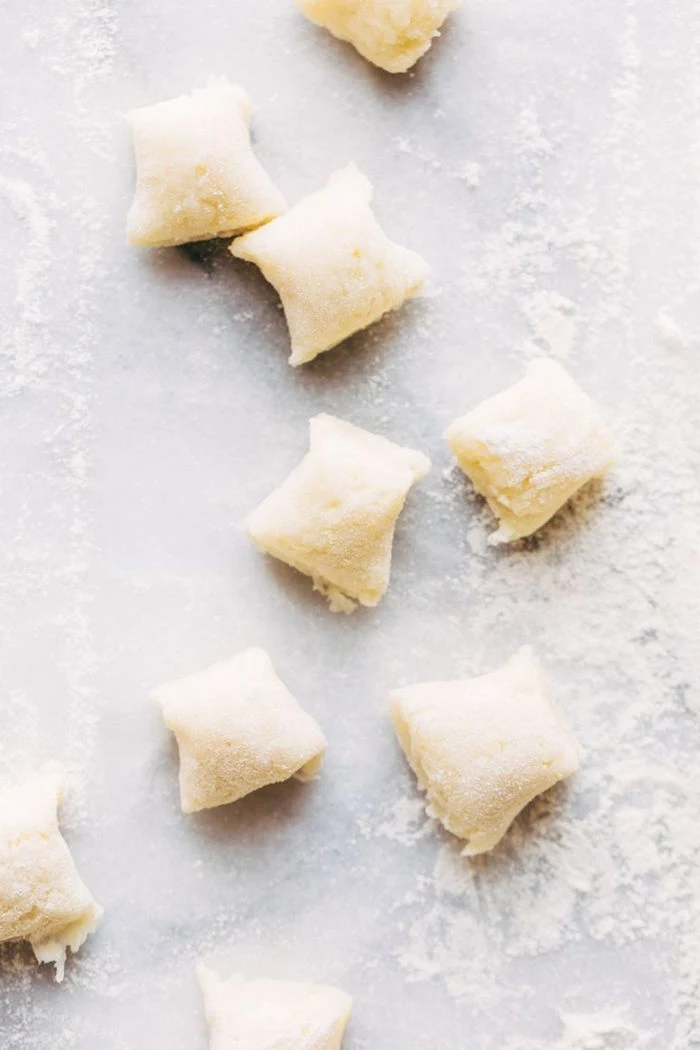
Adding an egg, or even just a yolk, is like buying insurance. The protein helps bind the dough, making it easier to handle and way less likely to disintegrate in the water. For beginners, I always recommend starting with an egg. It builds confidence. Once you get the hang of it, try a batch without and see what you think!
The Hands-On Technique for Pillowy Gnocchi
This is the process, refined for consistency and quality. Pay close attention to the feel of the dough—that’s where the magic is.
Your Gnocchi Toolkit (The Shopping List)
You don’t need a lot of fancy gear, but one tool is absolutely essential.
- A Large Pot: For boiling the spuds.
- A Potato Ricer: This is the non-negotiable item. A standard masher crushes the potato’s starch cells and creates a gluey paste. A ricer, on the other hand, presses the potato into light, airy strands. You can grab a decent one online or at stores like Target for between $20 and $35. It’s the single best investment you can make for your gnocchi game.
- A Bench Scraper: So useful for dividing and handling the sticky dough. Usually less than $10 at any kitchen supply store.
- A Gnocchi Board or a Fork: For getting those classic sauce-catching ridges.
The Recipe (Your Starting Point)
A quick heads-up: This recipe makes a generous amount, probably enough for 4-6 servings. It should take about an hour from start to finish. And the best part? The ingredients for this entire batch will likely cost you less than $10—way cheaper than buying pre-made!
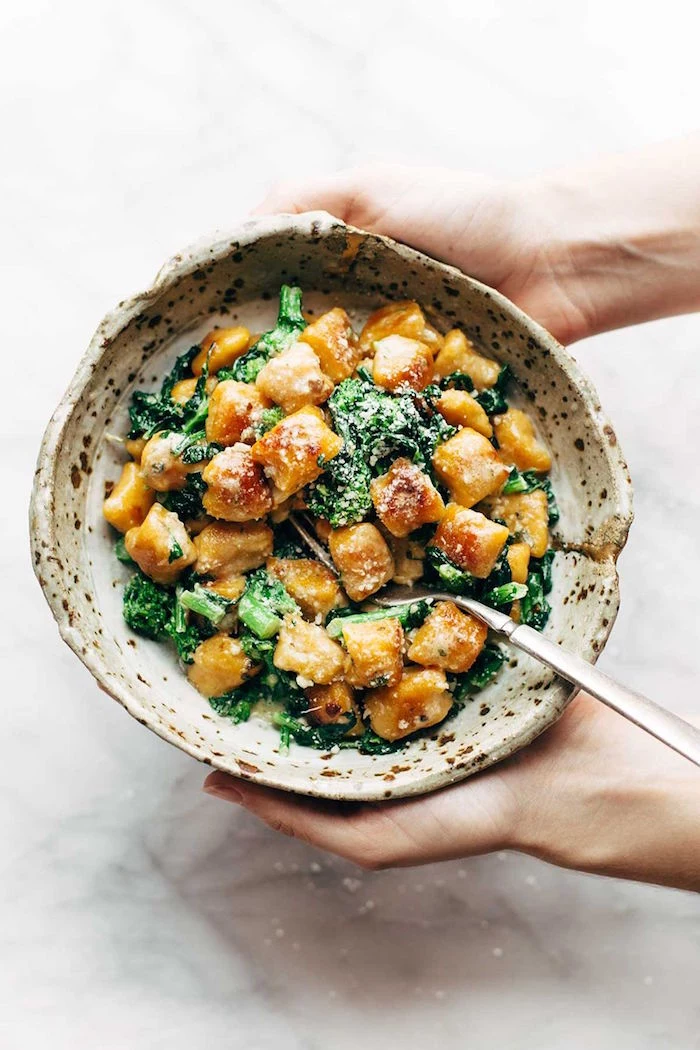
- 2 pounds (about 1 kg) Russet potatoes
- 1 large egg, lightly beaten
- 1 ½ teaspoons fine sea salt
- 1 to 1 ½ cups (125g to 185g) all-purpose flour, plus more for dusting
That flour amount is an estimate! It really depends on the humidity in your kitchen and your specific potatoes. You have to learn the feel.
Step-by-Step to Perfection:
- Cook the Potatoes: Scrub your potatoes and place them whole (skins on!) in a big pot. Cover with cold, salted water, bring to a boil, and cook until a knife slides into the center easily, about 25-35 minutes.
- Peel and Rice: Drain the potatoes right away. As soon as you can handle them (they need to be hot!), peel the skins off. Quick tip to save your fingerprints: Stab a fork into the potato to hold it steady, then use a small paring knife to pull the skin away. Work fast and pass the hot potatoes through your ricer onto a clean countertop. Spread them out a bit to let steam escape for a minute or two.
- Form the Dough: Mound the riced potatoes together and sprinkle the salt over them. Make a little well in the center and pour in the beaten egg. Use a fork to gently whisk the egg, pulling in a little potato from the sides. Now, sprinkle about 1 cup of the flour over everything.
- The Gentle Mix: Using your hands or a bench scraper, gently fold the ingredients together. Do NOT knead it like bread dough. Just press and fold until it barely comes together. It should feel very soft and a little sticky, but not wet. Think of the texture of soft Play-Doh. If it’s sticking to your hands like glue, add another tablespoon of flour. The moment it forms a soft, pillowy ball, STOP.
- Rest the Dough (Optional but smart): Lightly dust the dough ball with flour and let it rest for about 10 minutes. This helps the flour hydrate and makes the dough easier to roll.
- Roll and Cut: Cut the dough into 4-6 smaller pieces with your bench scraper. On a lightly floured surface, take one piece and use your fingertips to gently roll it into a rope about ¾-inch thick. Cut the rope into ¾-inch pieces.
- Shape the Gnocchi: Those ridges aren’t just for looks; they’re designed to hold sauce! The classic way is to press and roll each piece down a gnocchi board with your thumb. No board? No problem. Just use the back of a fork. Press a piece against the tines and give it a little flick to roll it off. Place the finished gnocchi on a lightly floured baking sheet, making sure they don’t touch.
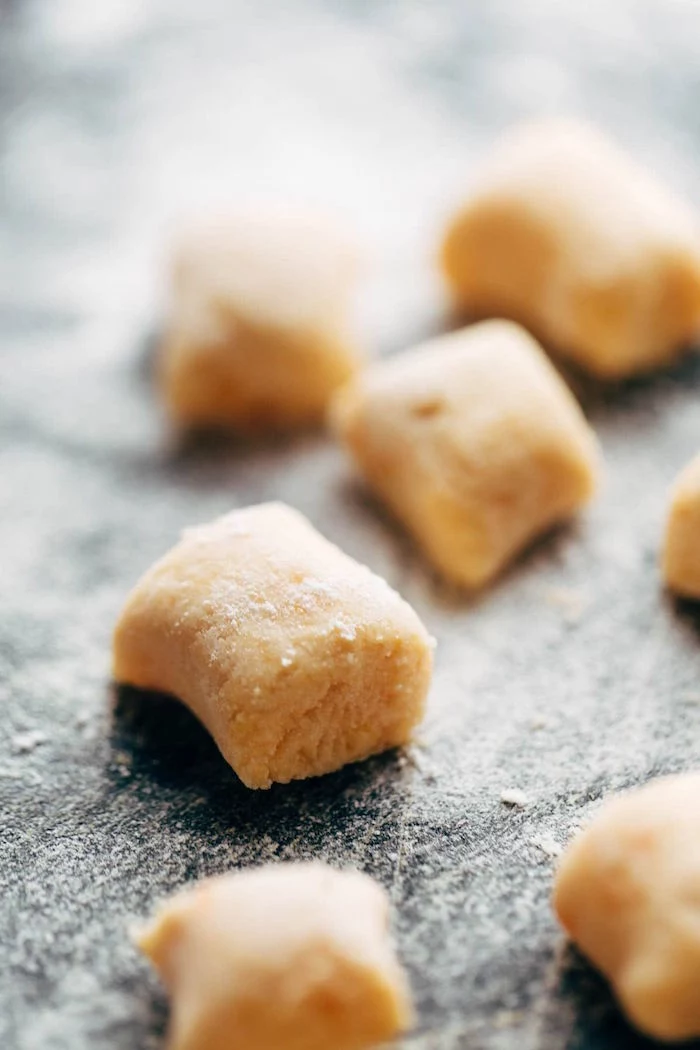
Common Gnocchi Problems & How to Fix Them
Even with the best instructions, things can go sideways. Here are the most common issues and how to solve them.
- Problem: “My gnocchi are tough and chewy.”
Cause: You either used too much flour or you overworked the dough. You developed too much gluten.
Solution: Next time, be more stingy with the flour and handle the dough as little as possible. Remember: fold, don’t knead. - Problem: “My gnocchi dissolved into mush in the water!”
Cause: The dough was too wet, likely from using waxy potatoes or not enough flour.
Solution: Use starchy potatoes! And here’s a game-changing tip: before you cook the whole batch, boil ONE test gnocco. If it holds its shape, you’re good to go. If it starts to fall apart, your dough needs a little more flour. - Problem: “My gnocchi are heavy and dense.”
Cause: This is a texture issue, almost always from using a masher instead of a ricer, which creates a gluey potato base.
Solution: Get a potato ricer. Seriously. It makes all the difference.
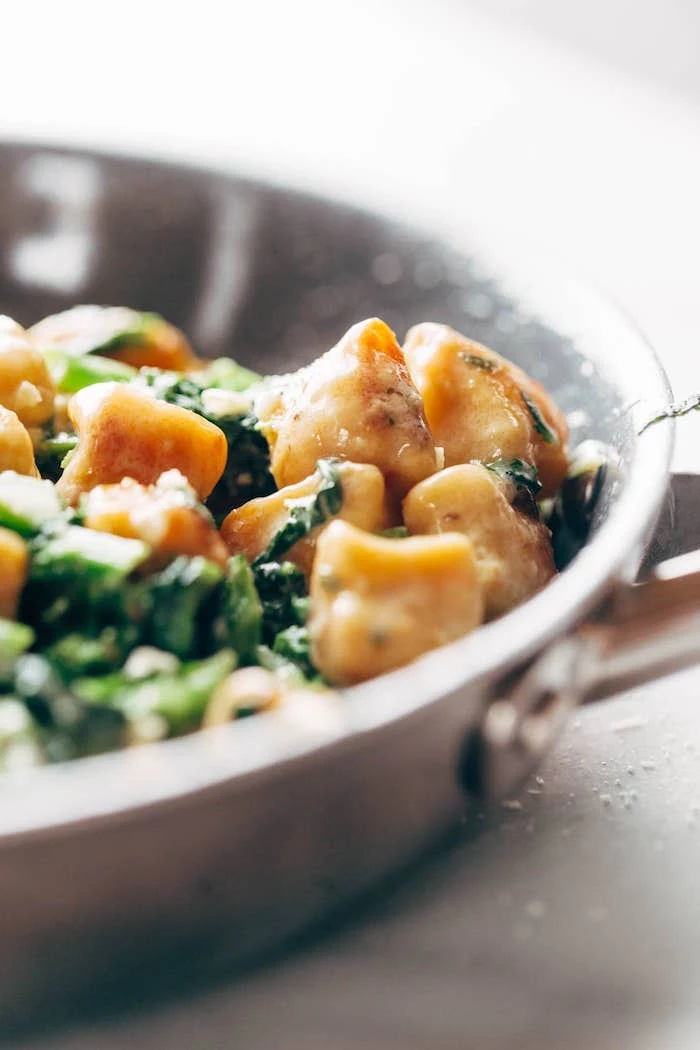
Part 2: Fun Gnocchi Variations
Once you’re feeling confident with the potato version, you can start playing around. The core principles of managing moisture and using a light touch are exactly the same.
Ricotta Gnocchi: The Lightest Dumpling Imaginable
These are often called gnudi (which means ‘naked’ ravioli filling) and they are unbelievably light and delicate. The key is simple but crucial: you must drain the ricotta. The stuff in a standard tub is way too wet. Line a strainer with cheesecloth, dump in the ricotta, and let it drain in the fridge overnight. You will be shocked by how much water comes out. Do not skip this step!
Sweet Potato or Pumpkin Gnocchi
Using sweet potatoes or squash gives you a gorgeous color and a slightly sweet flavor that’s perfect for autumn. But just like ricotta, these veggies are full of water. The trick here is to bake them, never boil them. Pierce a sweet potato and bake it until soft. For pumpkin or squash, cut it in half, scoop the seeds, and roast it cut-side down. Once it’s cooked, scoop out the flesh and pass it through your ricer just like a regular potato.
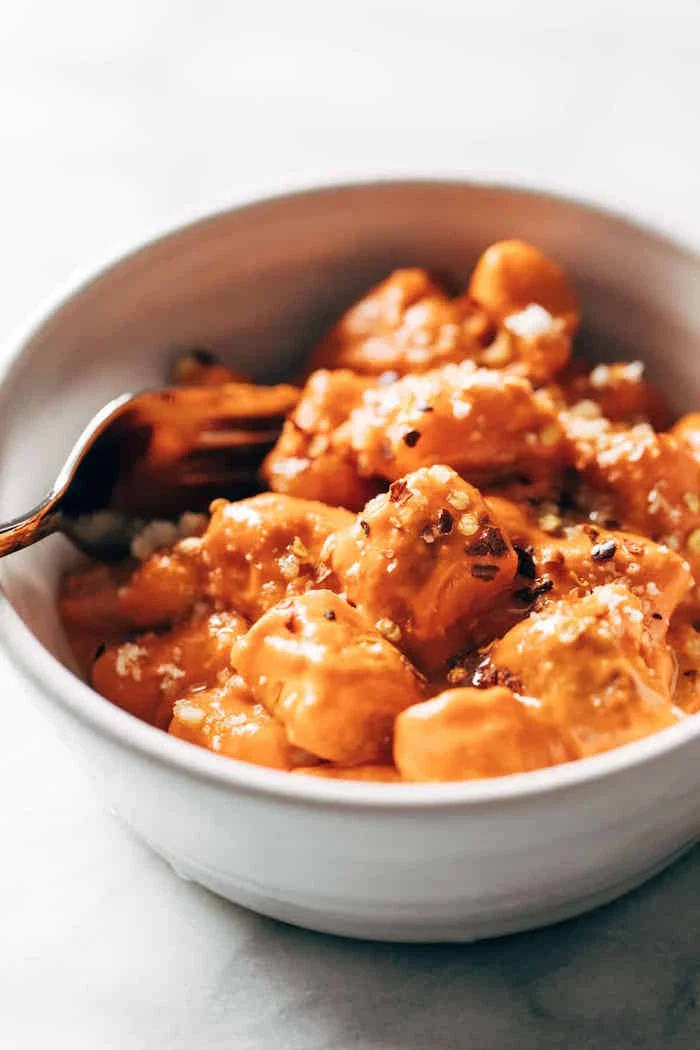
Part 3: Cooking, Serving, and Storing Like a Pro
Making the gnocchi is only half the job. How you cook and sauce them is just as important.
The Perfect Boil and Finish
- Use a Huge Pot: Gnocchi need room to dance. A crowded pot cools the water down and makes them stick. Salt the water well—it should taste like the ocean.
- A Rolling Boil: Don’t be shy. Get the water to a full, roaring boil before you drop the gnocchi in.
- The Float Test: They’ll sink at first, then float to the surface when they’re cooked, usually in 2-4 minutes.
- Finish in the Sauce: This is the pro move. Use a slotted spoon to lift the gnocchi from the water and transfer them directly into the pan with your warm sauce. Add a splash of the starchy cooking water to the pan. It helps the sauce emulsify and cling beautifully to every single dumpling.
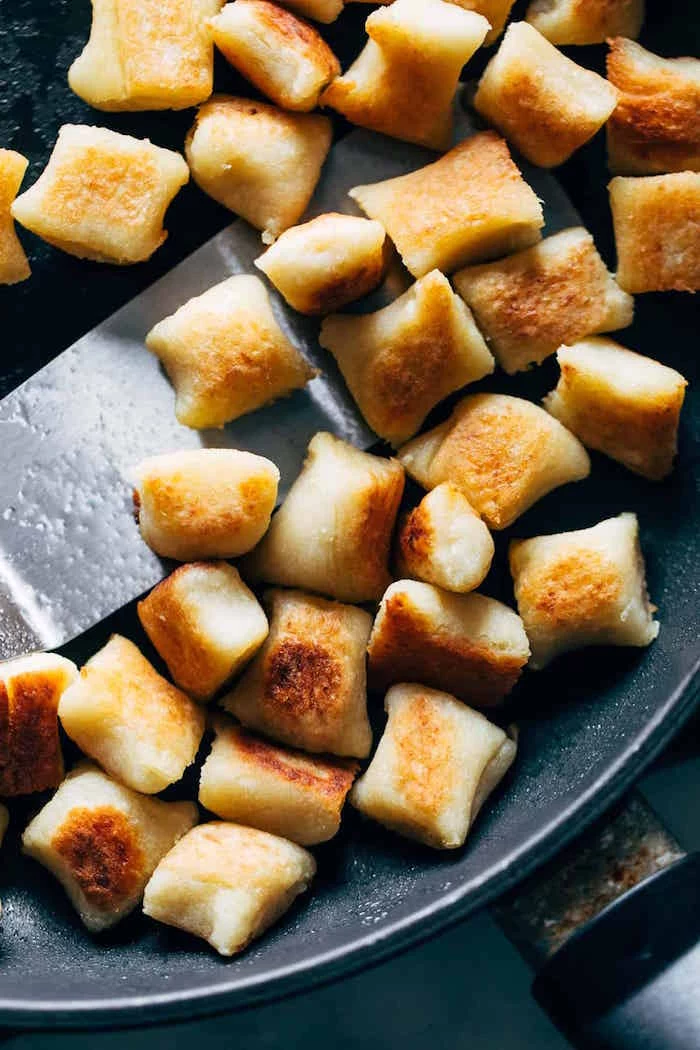
Go-To Sauce Pairings
- Brown Butter and Sage: A timeless classic. In a skillet, melt 1/4 cup (a half stick) of unsalted butter over medium heat. Toss in about 8-10 fresh sage leaves and swirl the pan until the butter turns a nutty brown. It happens fast, so don’t walk away!
- Simple Tomato and Basil: A 28-ounce can of good-quality crushed tomatoes, simmered for 20 minutes with a splash of olive oil, a smashed garlic clove, and a handful of fresh basil. Perfection.
- Classic Pesto: The vibrant flavor of basil pesto is a perfect match. Just thin it with a spoonful of the gnocchi cooking water before tossing.
Storing Gnocchi: The Freezer is Your Friend
Here’s a secret: fresh gnocchi dough does NOT do well in the fridge. The potato starch goes gray and gummy. But you can absolutely freeze the shaped gnocchi.
Freezing Method:
Place your shaped gnocchi on a baking sheet in a single layer. A pro-tip is to dust the sheet with semolina flour—its coarse texture works even better than regular flour to prevent sticking. Pop the sheet in the freezer until the gnocchi are frozen solid, about an hour. Then, transfer them to a freezer bag. They’ll be good for about a month.
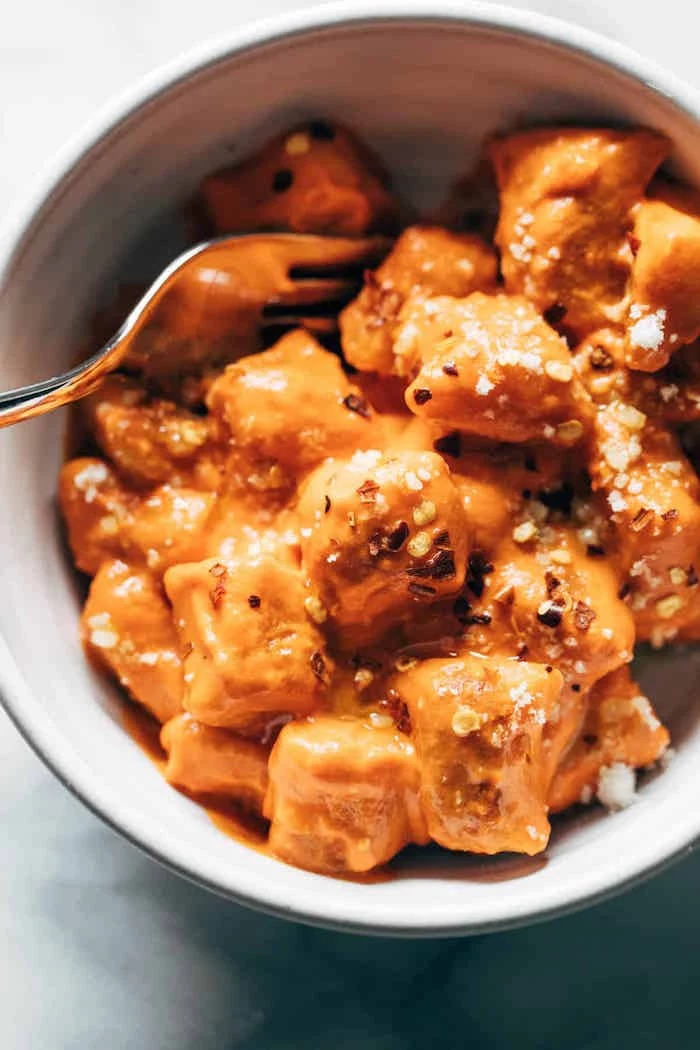
Crucial: Cook them directly from frozen! Do not thaw them first. Just drop them into the boiling water. They’ll just need an extra minute or two to cook.
And that’s it. Remember what that chef told me: the real recipe is in your hands. Your first batch might not be perfect, but you’ll develop a feel for the dough. The satisfaction of turning a humble potato into a plate of delicate, heavenly dumplings is a reward that’s absolutely worth the effort.
Inspirational Gallery
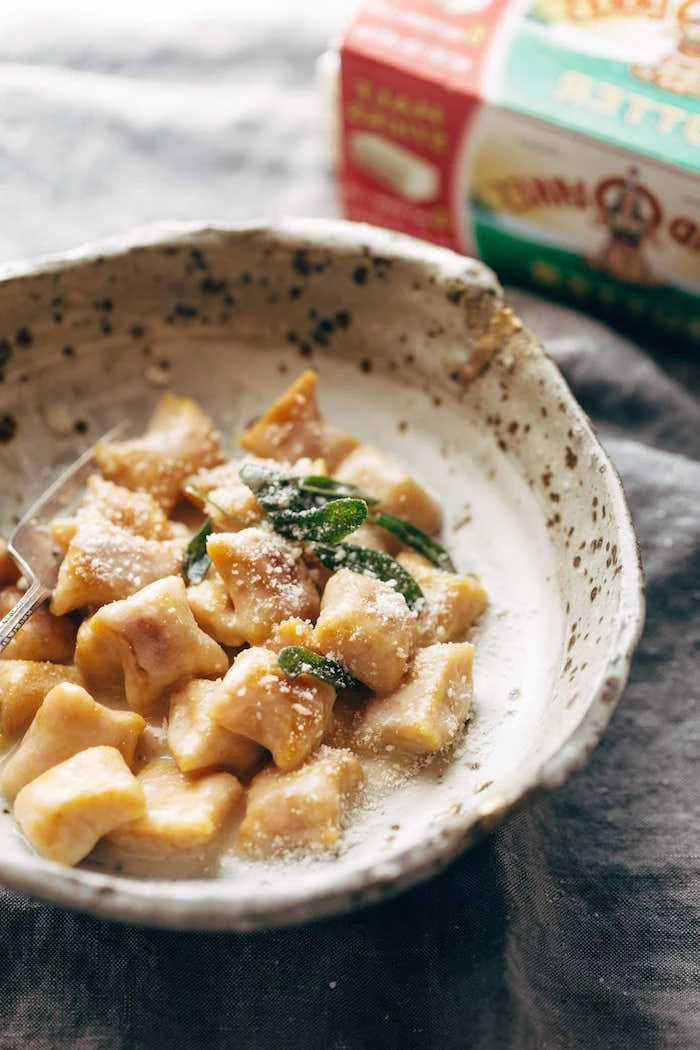
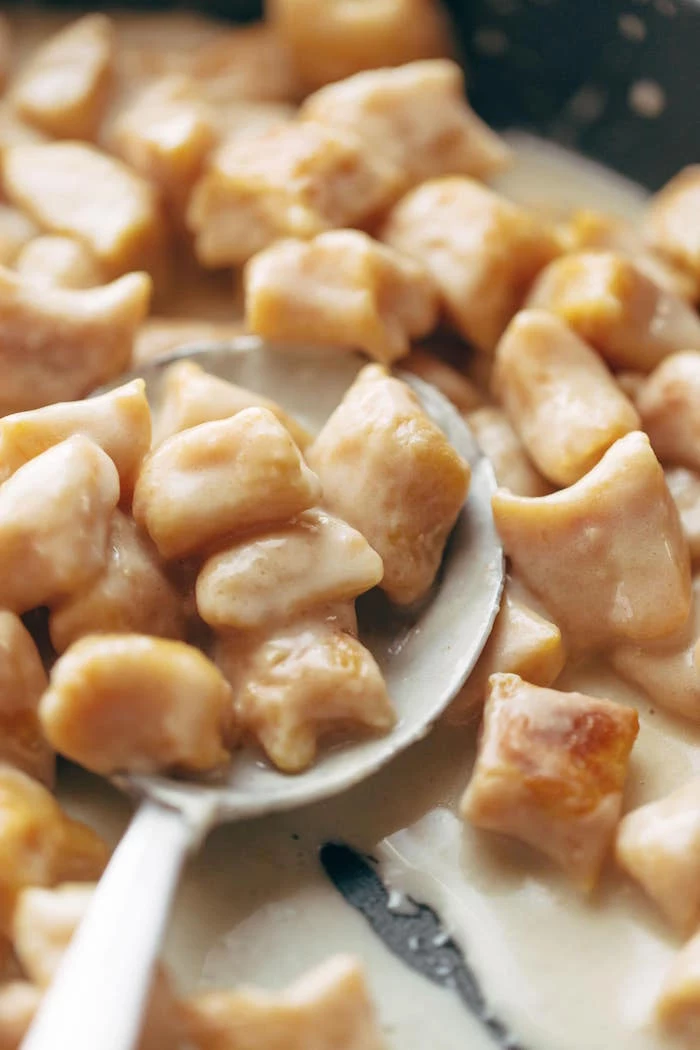
The Ricing Revolution: If there’s one tool that separates good gnocchi from great gnocchi, it’s the potato ricer. Unlike a masher, which crushes starch cells and can lead to a gluey texture, a ricer gently pushes the cooked potato through tiny holes. This creates fine, fluffy strands that incorporate flour with minimal effort. Investing in a sturdy model, like the OXO Good Grips Potato Ricer, is a true game-changer for achieving that coveted light-as-air consistency.

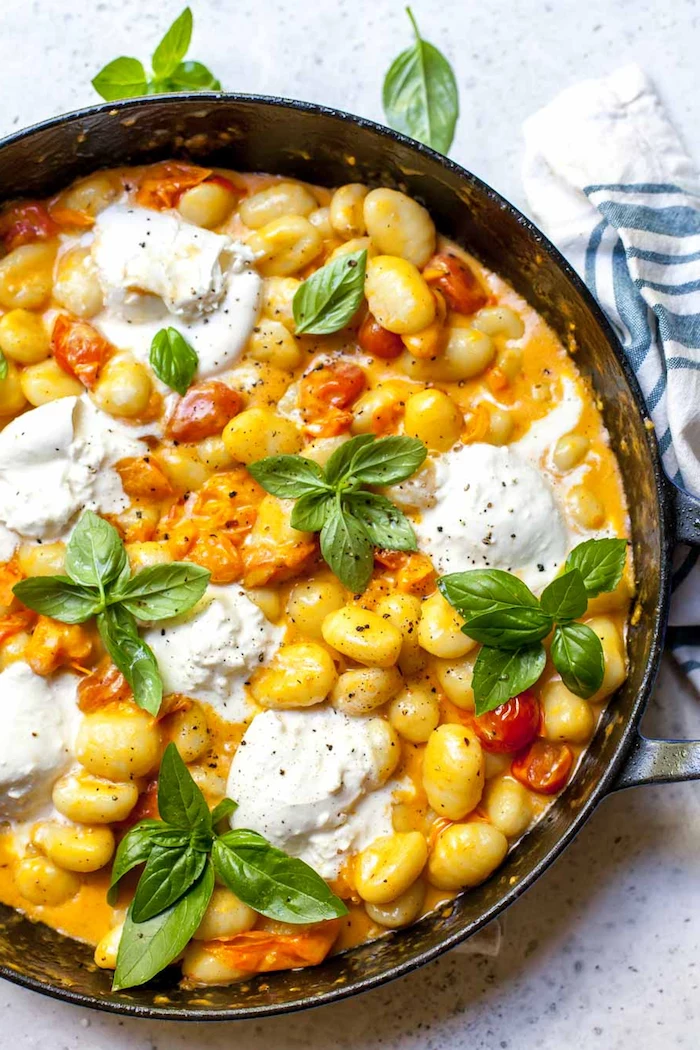
- Perfectly golden and crisp on the outside.
- Tender and pillowy on the inside.
The secret? Pan-searing. After boiling your gnocchi until they float, drain them well and toss them into a hot pan with butter or olive oil. Sauté for a few minutes until beautifully browned. This technique adds an irresistible textural contrast that elevates any dish.
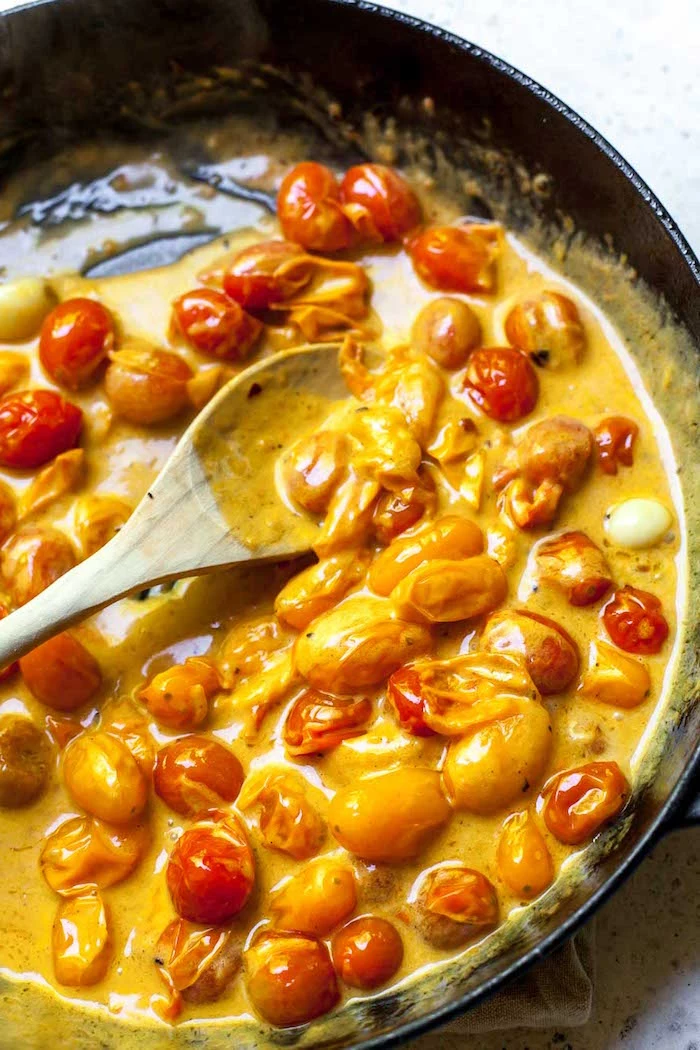
Can you really tell if gnocchi are cooked just by looking?
Yes, and it’s one of cooking’s most satisfying moments. As they cook in boiling salted water, the starches gelatinize and trap steam. This process makes the dumplings less dense than the water, causing them to float to the surface. Once they all bob to the top, give them another 15-30 seconds to ensure the very center is cooked through, then scoop them out with a slotted spoon.
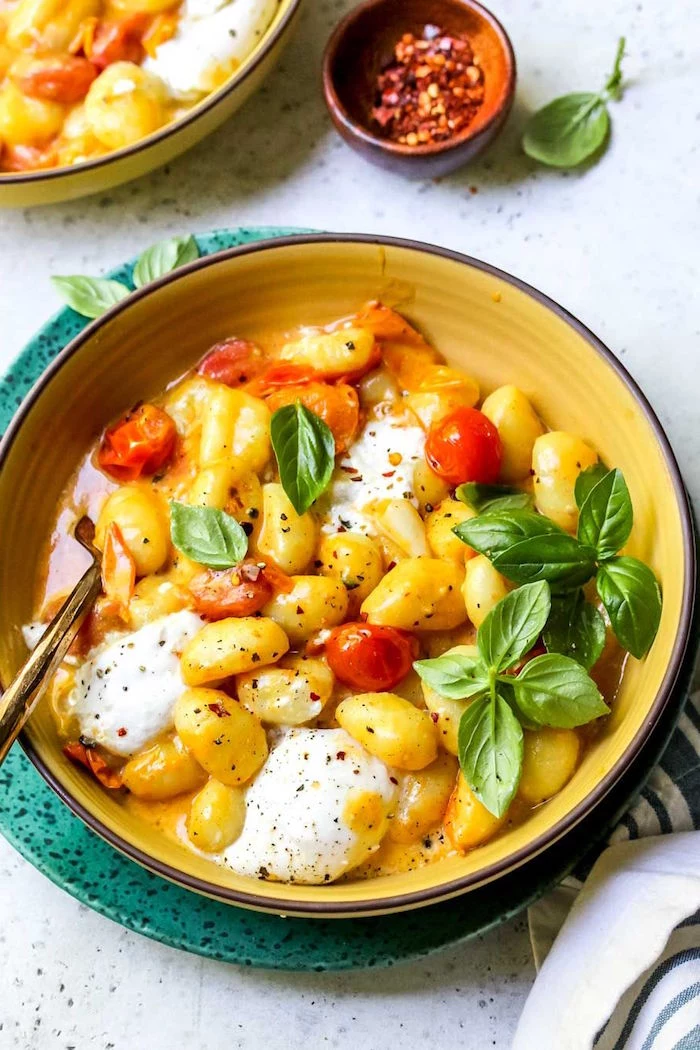
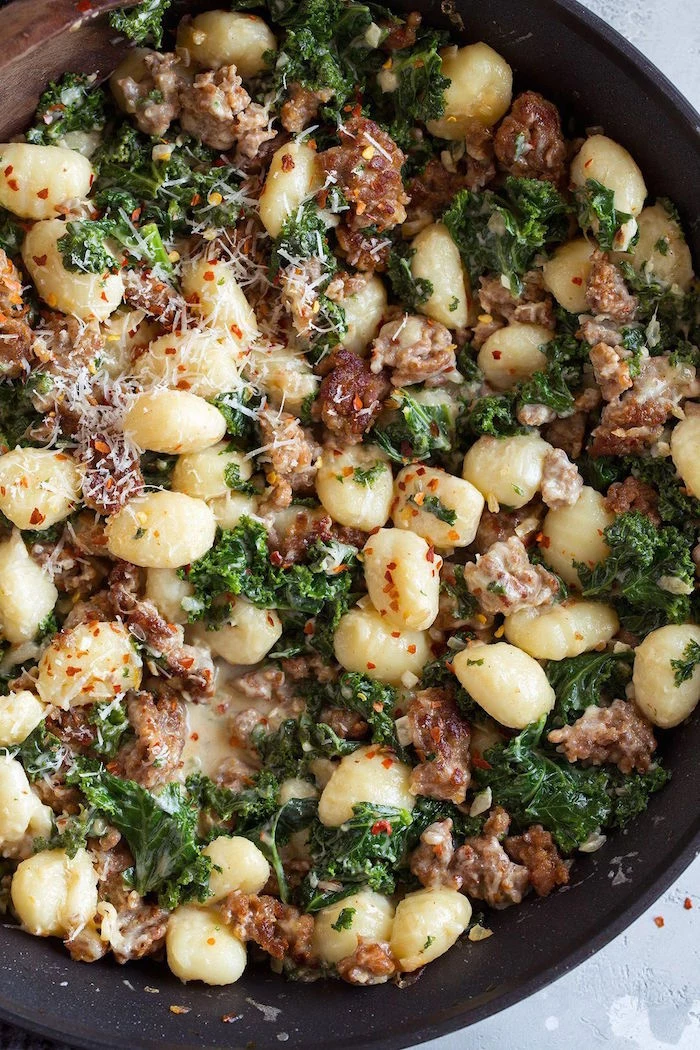
The word “gnocchi” likely comes from the Italian word “nocca,” which means knuckle, or from “nocchio,” meaning a knot in wood, referencing their small, lumpy shape.
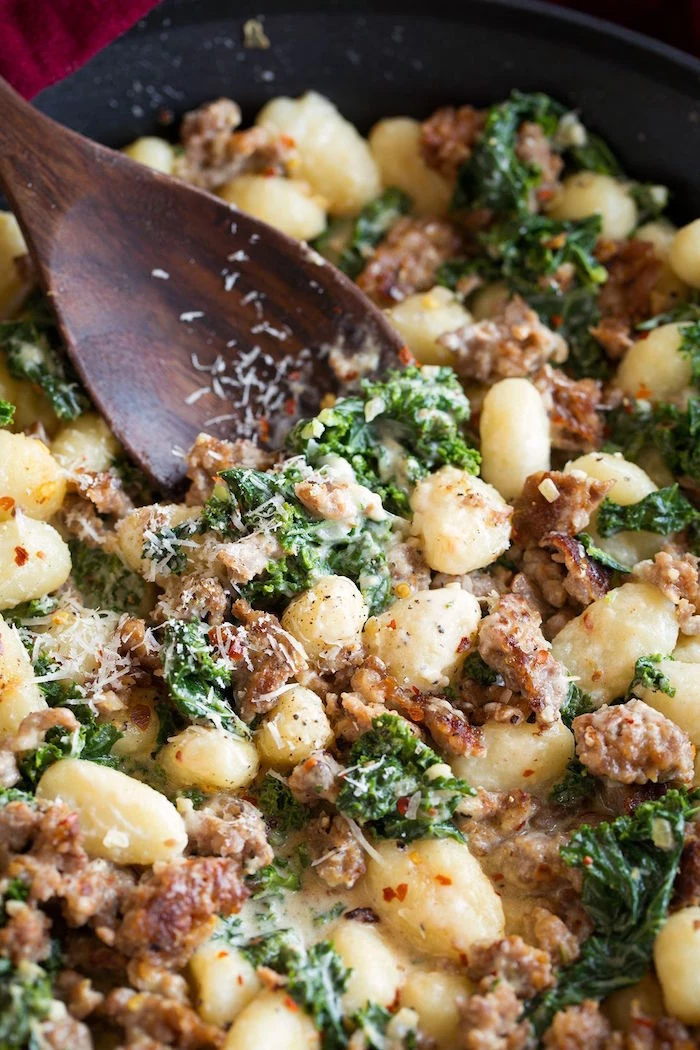
Thinking of making gnocchi for a dinner party? The beauty of these dumplings is that they can be prepared ahead of time. Here’s how to do it right:
- Shape all your gnocchi and arrange them in a single layer on a baking sheet lightly dusted with semolina flour (it’s less absorbent than all-purpose).
- Place the entire tray in the freezer.
- Once frozen solid (about 1-2 hours), transfer the gnocchi to a freezer bag or airtight container. They will keep for up to a month.
Cook them directly from frozen in boiling water, adding about a minute to the usual cooking time.
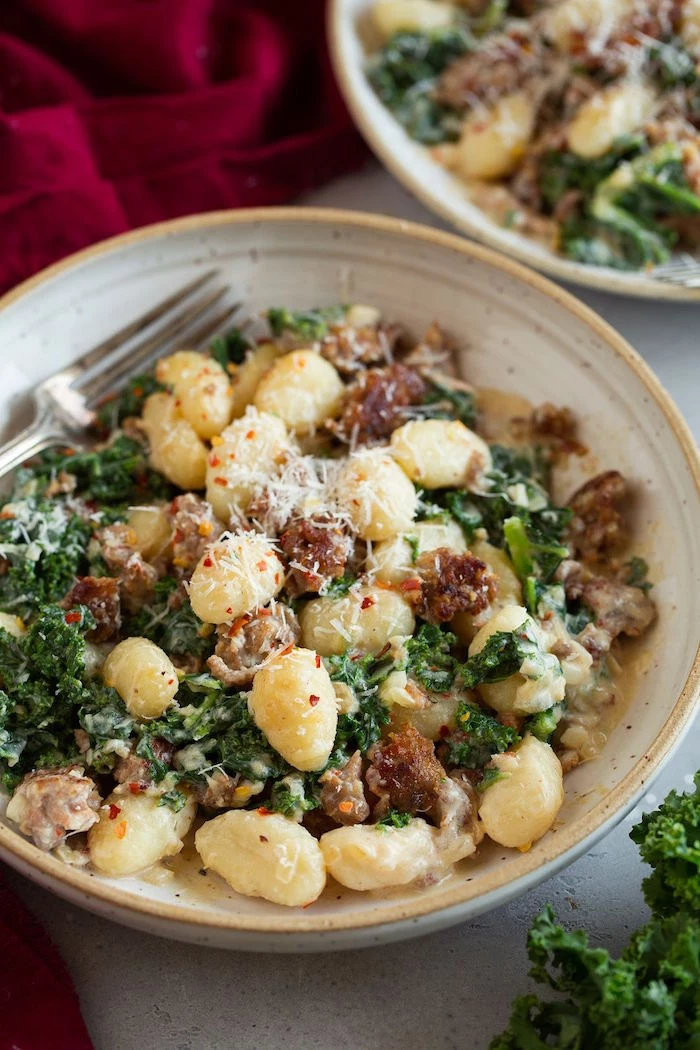
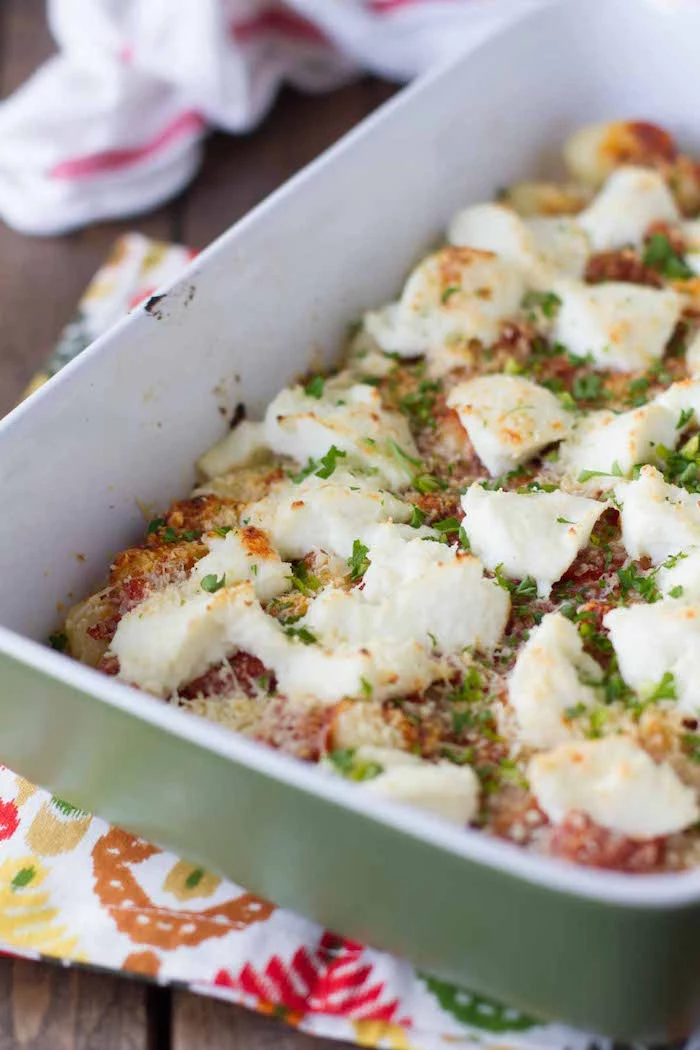
Important: Don’t drown your delicate gnocchi in a heavy, watery sauce. A light dumpling’s worst enemy is a sauce that turns it soggy. Opt for sauces that coat rather than soak, like a brown butter and sage sauce, a vibrant pesto, or a simple, high-quality tomato sauce that has been reduced to a thicker consistency.

- Finely chopped fresh rosemary
- A generous grating of Parmigiano-Reggiano
- A pinch of nutmeg and black pepper
- Sautéed, finely minced mushrooms
Incorporate one of these directly into your dough just before the final, gentle knead. This is a simple way to build layers of flavor from the inside out, transforming a classic recipe into your signature dish.
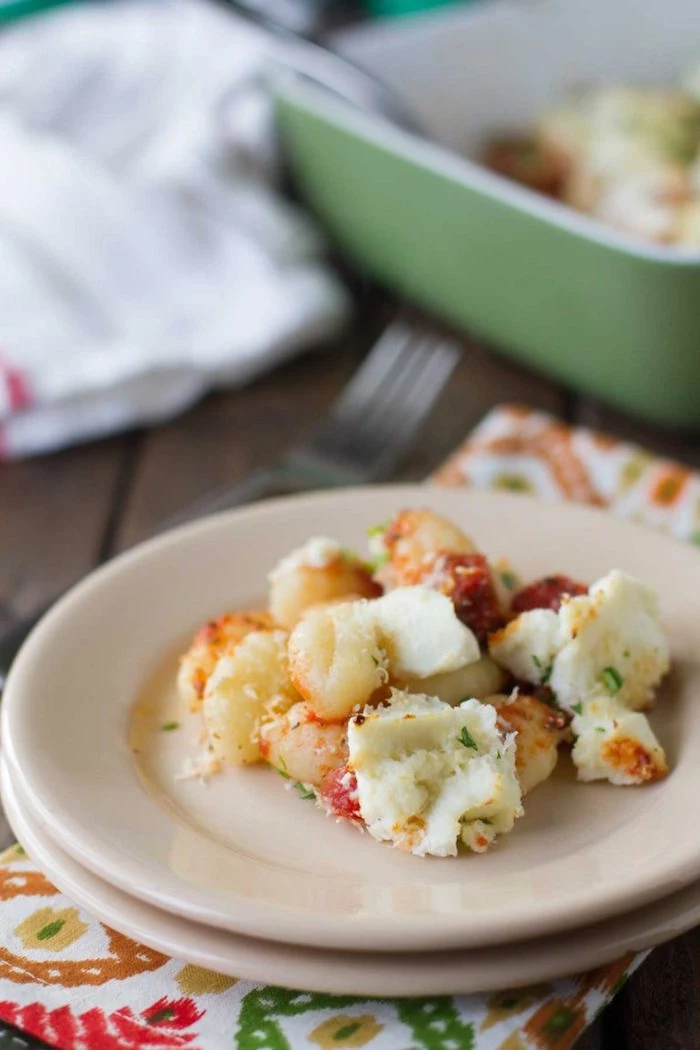
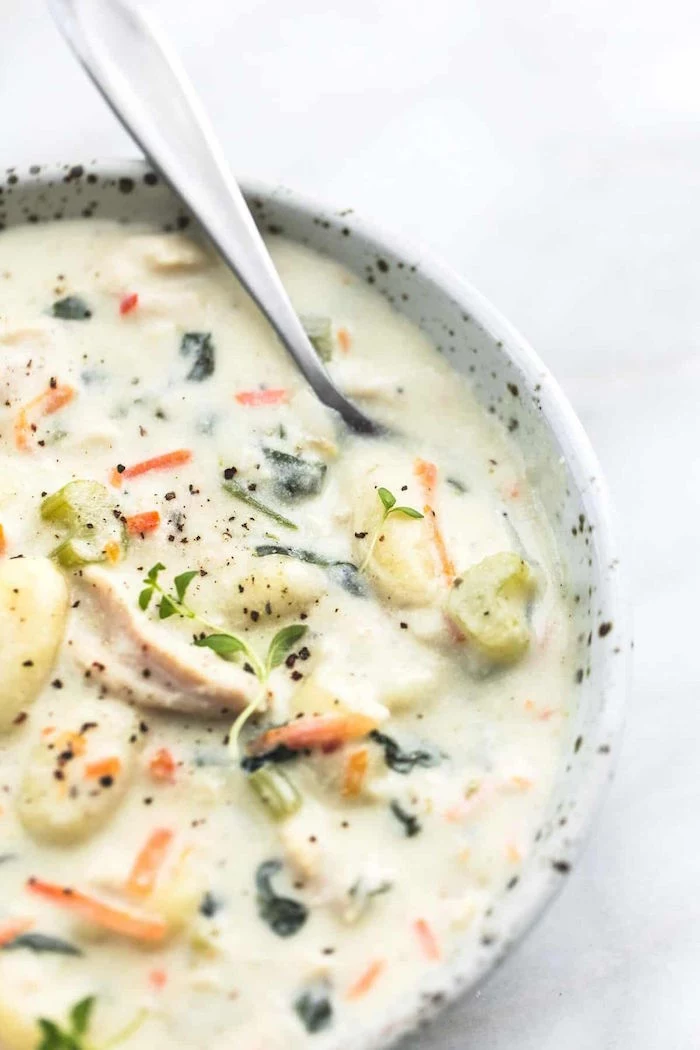
According to a 2019 study on food waste, potatoes are one of the most commonly discarded household vegetables. Making gnocchi is a perfect—and delicious—way to use up any spuds that are starting to sprout.
This not only honors the ingredient but also connects to the resourceful spirit of Italian
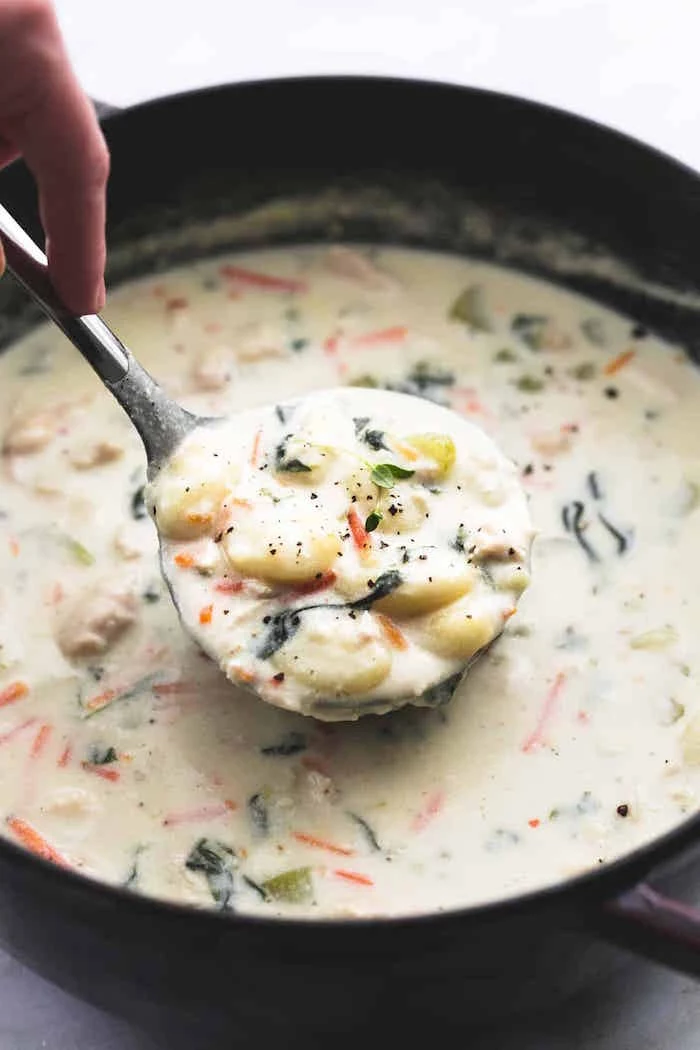
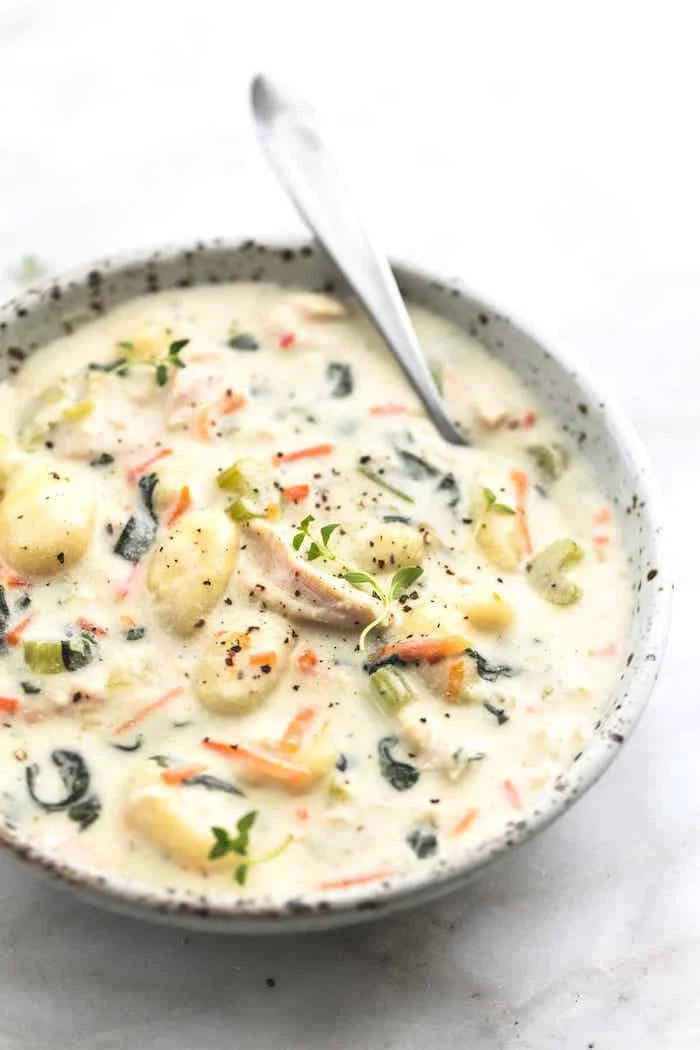
While potato is king, don’t overlook its sophisticated cousin: ricotta gnocchi. Known in Italy as ‘gnudi’ (meaning ‘nude,’ as in nude ravioli filling), these are even lighter and more ethereal. They skip the potato entirely, relying on good-quality, well-drained whole-milk ricotta, an egg yolk, Parmesan, and just a whisper of flour. They are incredibly delicate and pair beautifully with simple butter or light tomato sauces.
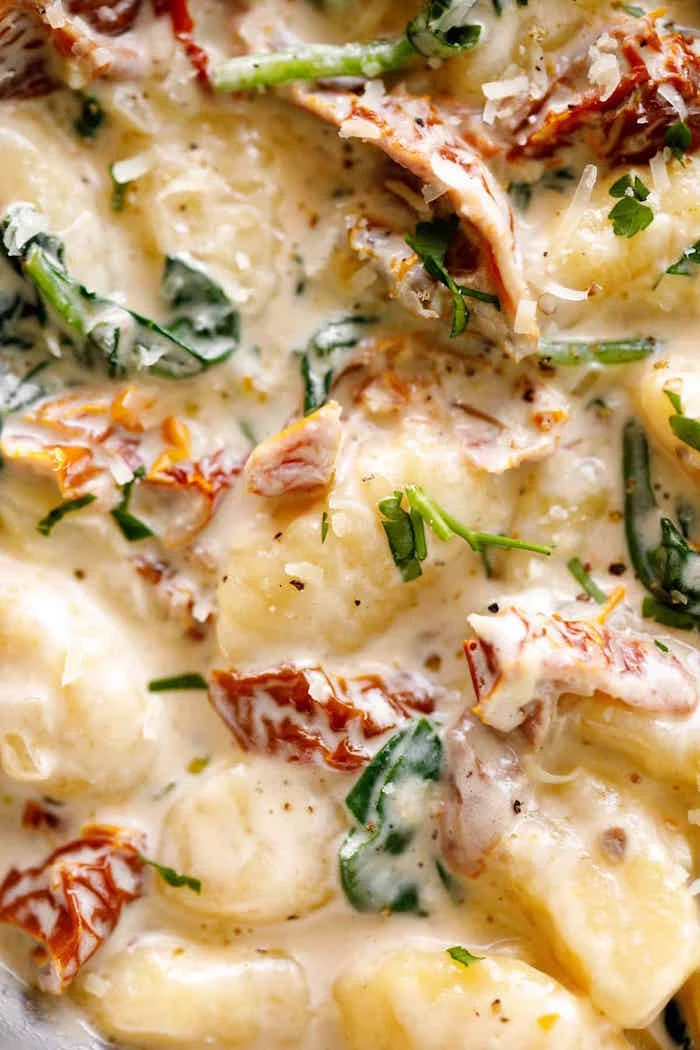
Do you have to bake the potatoes instead of boiling them?
While boiling is classic, baking your Russet potatoes whole, directly on the oven rack, is a pro move. Puncture them a few times with a fork and bake at 400°F (200°C) until tender. This method draws out excess moisture, resulting in a fluffier, drier potato flesh. The less water in your potato, the less flour you’ll need to add, which is the ultimate key to light gnocchi.
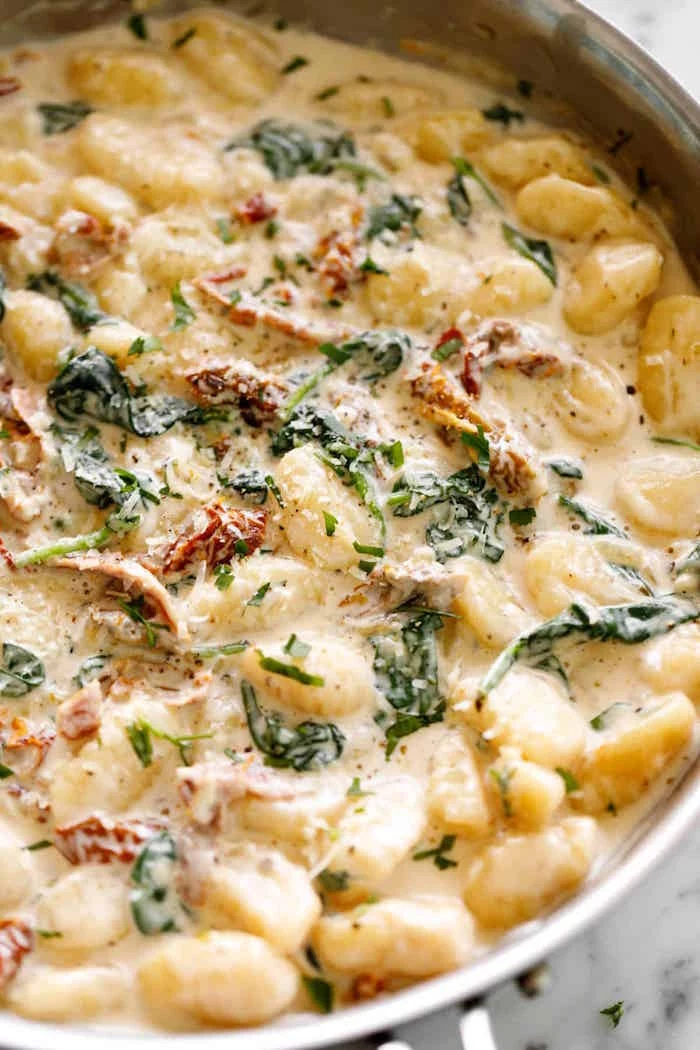
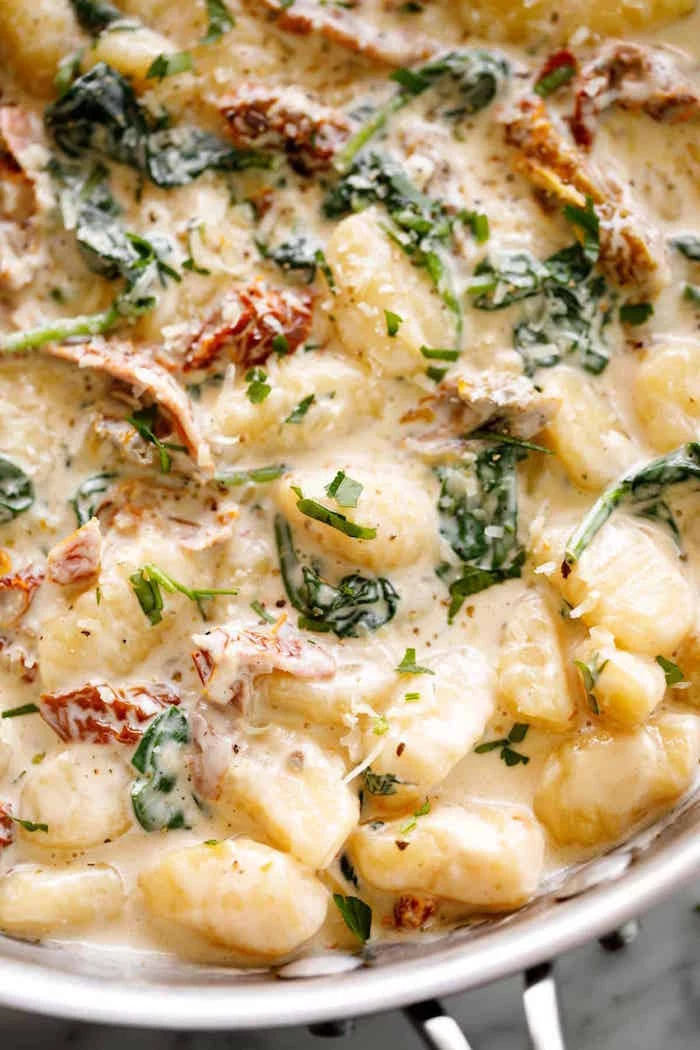
Those signature ridges aren’t just for looks. Rolling the gnocchi down a gnocchi board or the tines of a fork creates grooves and a small indentation. This brilliant design feature drastically increases the surface area, giving your delicious sauce more to cling to in every single bite. It’s a tiny step that makes a huge difference in the final dish.
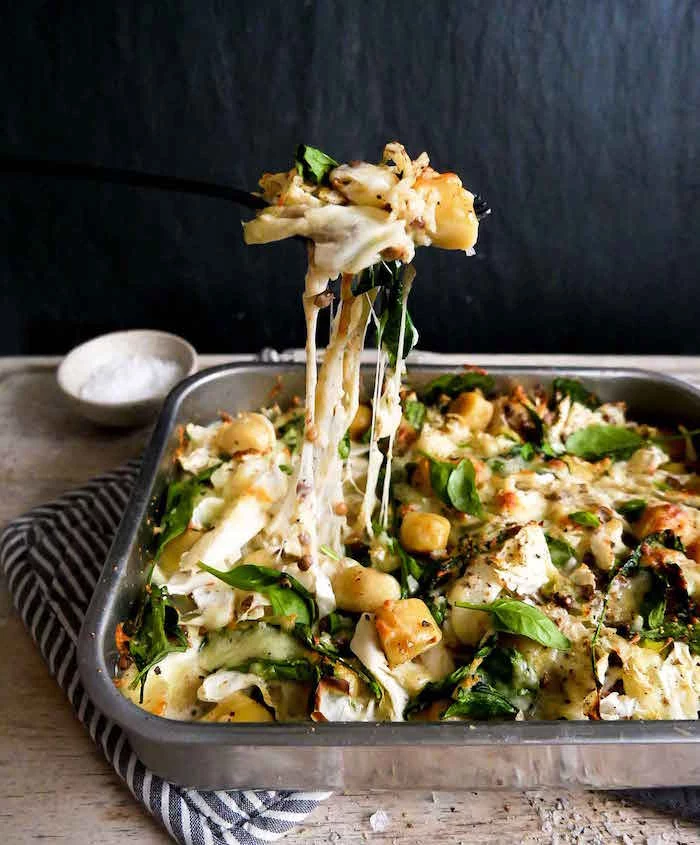
Venture beyond the familiar with a trip to Rome, culinarily speaking. Gnocchi alla Romana are completely different from their potato-based cousins. These are large, round discs made from cooked semolina flour, milk, cheese, and egg yolks. They are arranged in a baking dish, dotted with butter, sprinkled with more cheese, and baked until golden and bubbling. A uniquely comforting and elegant variation.
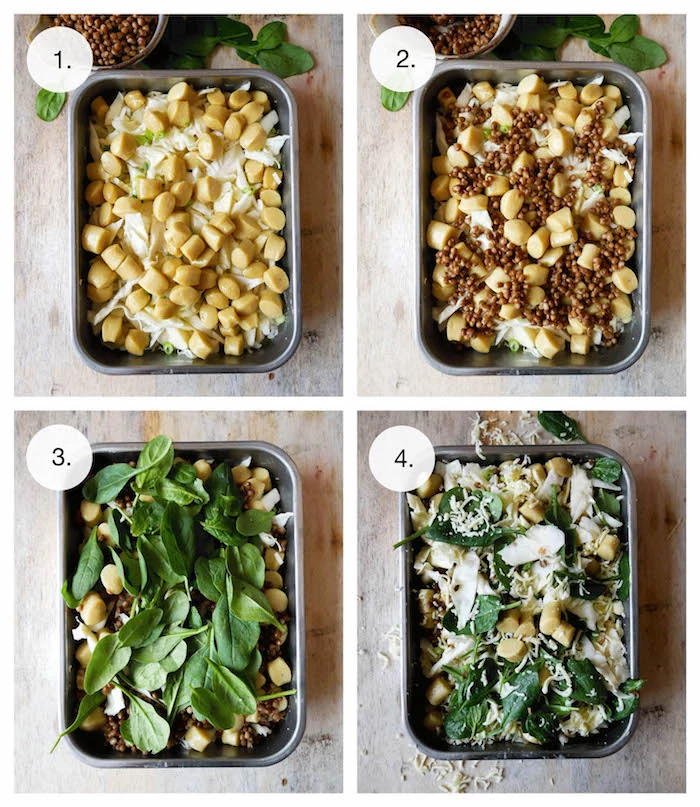
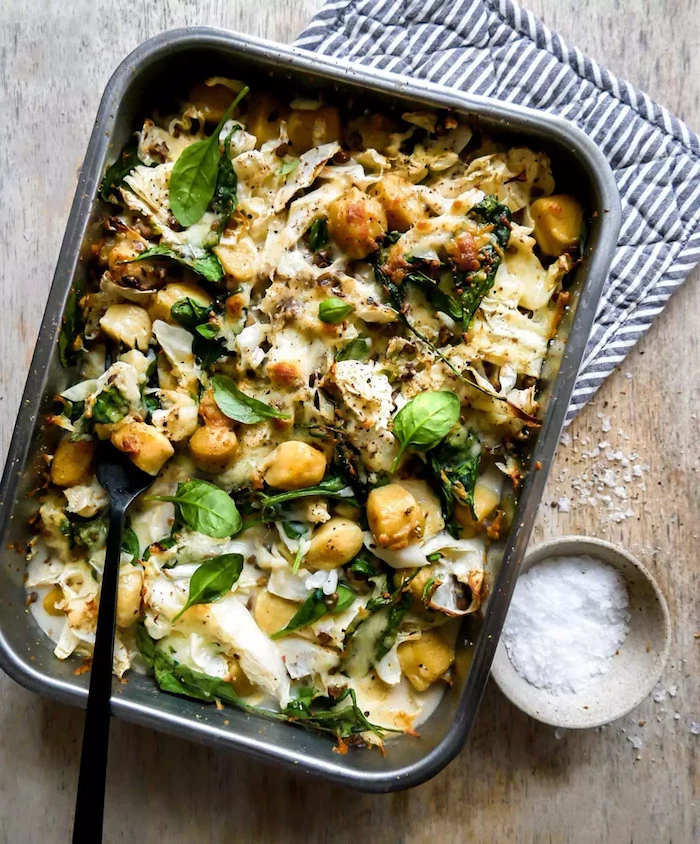
- A slick, shiny surface on the dough.
- A noticeable resistance or spring-back when you press it.
- The dough feels tough and elastic rather than soft and pillowy.
The cause? Overworking the dough. Once you see these signs, the gluten has developed too much. The resulting gnocchi will be chewy, not tender. The key is to stop mixing the moment the dough just comes together.
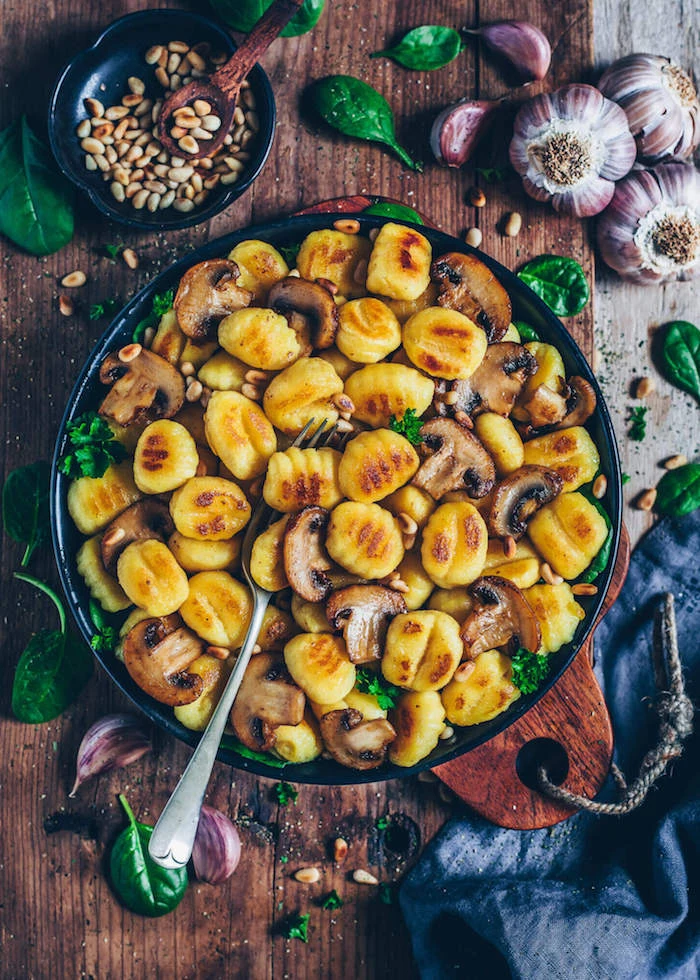
Bring a splash of vibrant color to the table by swapping some potato for vegetable purée. For a stunning pink, use roasted and puréed beetroot. For a lovely green, use well-drained, cooked spinach. These not only add visual appeal but also a subtle, earthy sweetness that pairs wonderfully with goat cheese or poppy seeds.
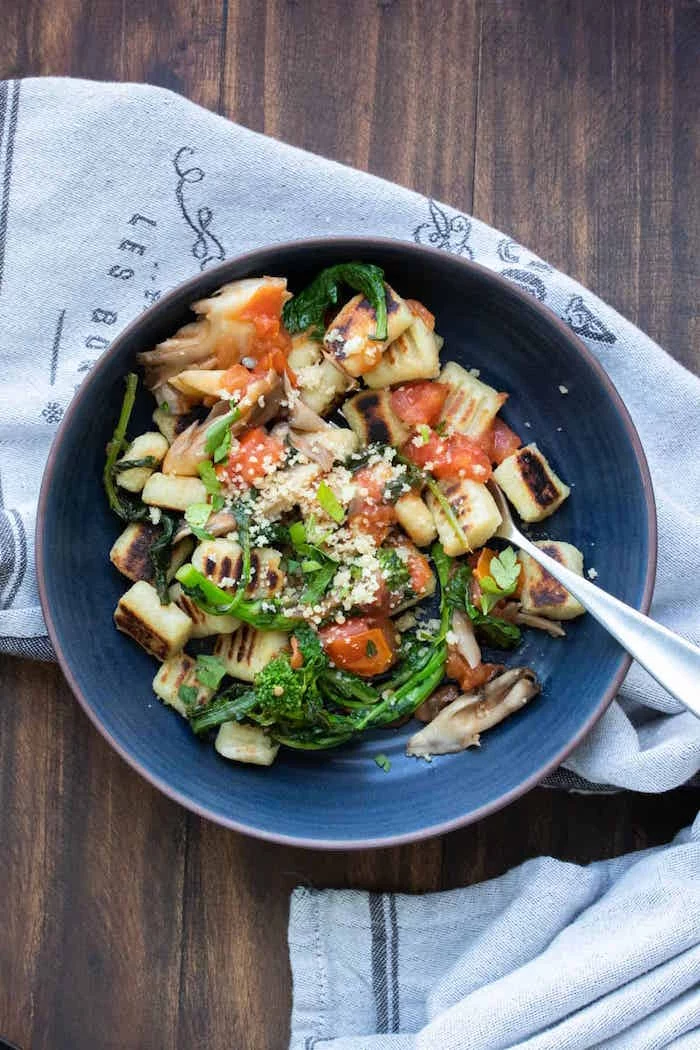

Salt the Water, Seriously: Treat your gnocchi cooking water like you would for pasta. It should be, as Italian chefs say, ‘salato come il mare’—as salty as the sea. The gnocchi absorb the salted water as they cook, seasoning them perfectly from the inside out. This step is non-negotiable for a flavorful result.
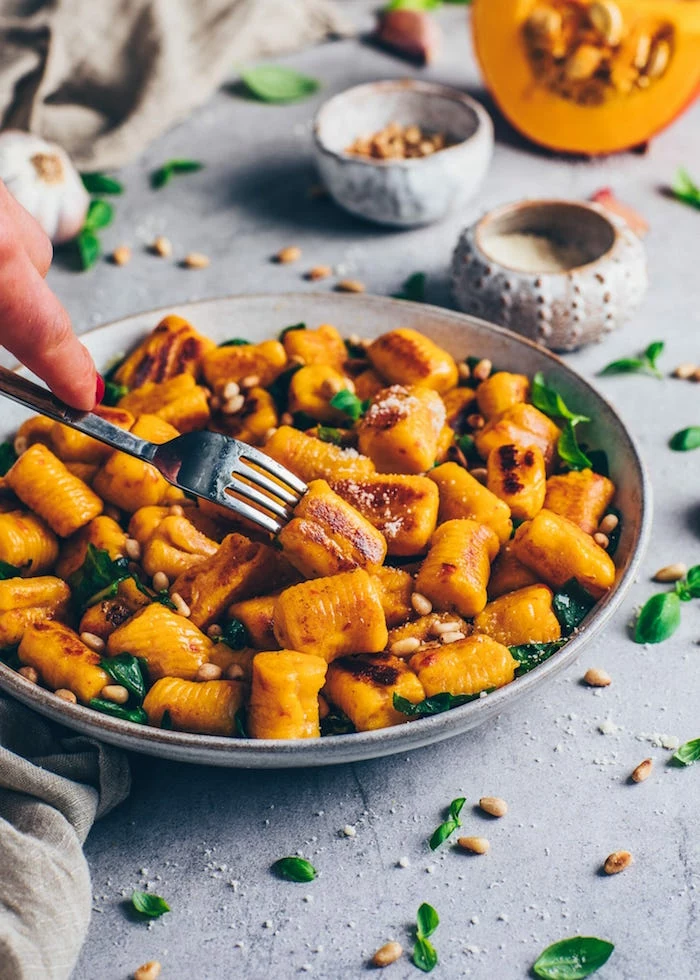
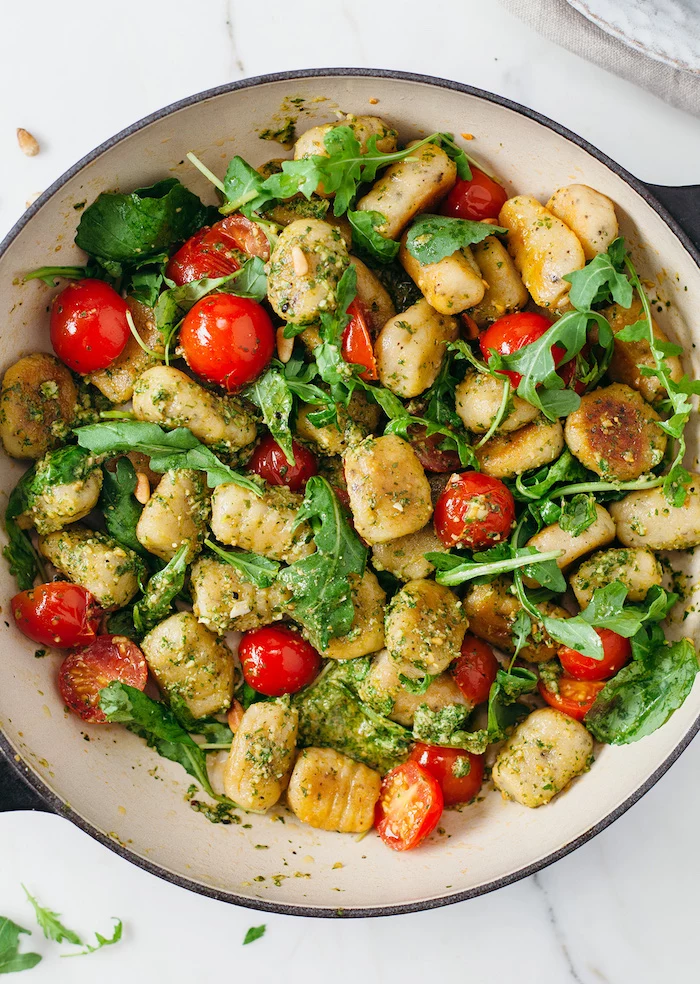
The rustic charm of a simple butter and sage sauce is a perfect match for potato gnocchi. For wine, think Northern Italian. A crisp Pinot Grigio from Alto Adige cuts through the richness, while a light, earthy red like a Barbera d’Asti complements the nutty butter and herbaceous sage without overpowering the delicate dumplings.
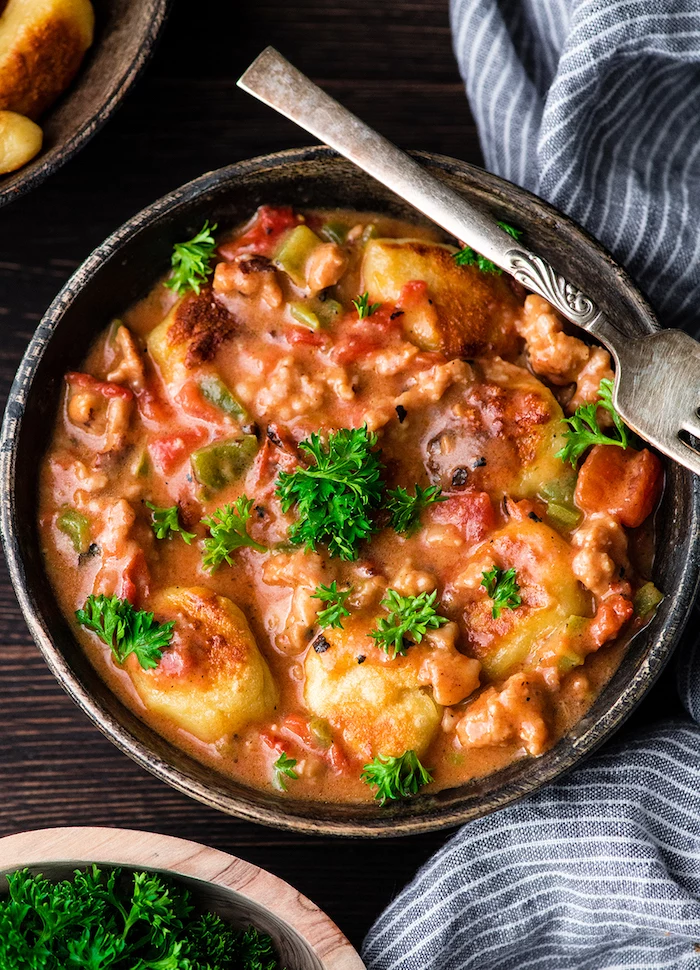
Can you use sweet potatoes instead of Russets?
Absolutely, but with a caveat. Sweet potatoes contain much more moisture and less starch than Russets. To succeed, you must bake them to dry them out as much as possible. You’ll also likely need more flour to form a workable dough. The result is a delicious gnocco with a subtle sweetness, perfect for pairing with brown butter, pecans, and a hint of cinnamon.
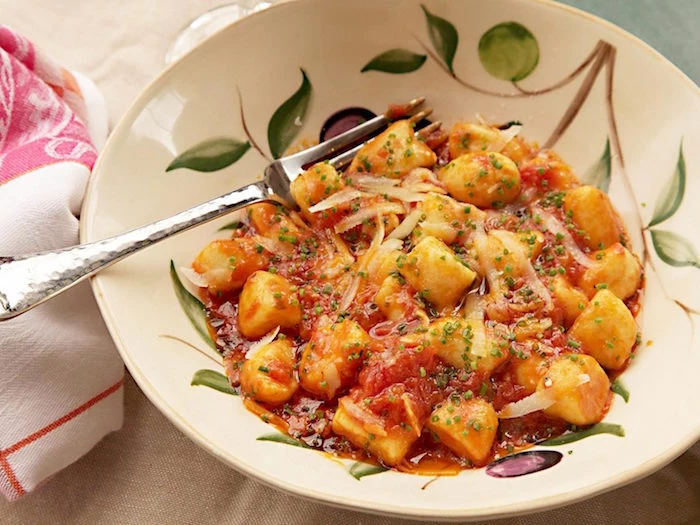
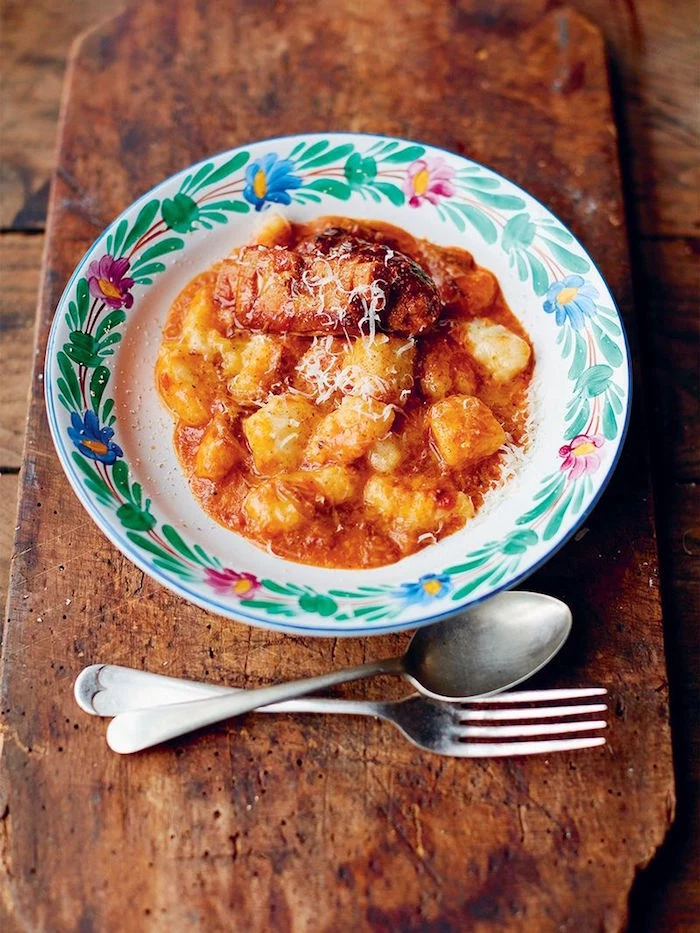
Making gnocchi is a wonderfully tactile and fun group activity, perfect for an evening with friends or family. Set up stations with floured surfaces and gnocchi boards. One person can roll the dough into ropes, while others cut and shape the individual dumplings. It turns meal prep into a memorable, collaborative experience.
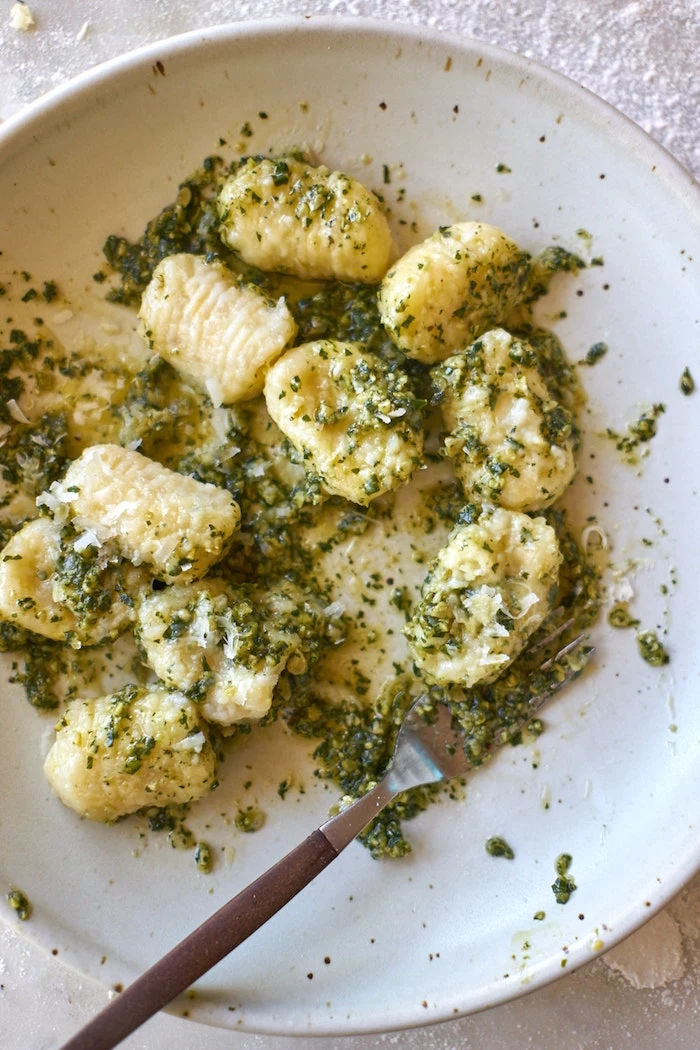
- The dough feels wet and sticky, refusing to come together.
- You have to add a huge amount of flour to make it workable.
- The finished gnocchi disintegrate in the boiling water.
The culprit? Waterlogged potatoes. This happens when you use a waxy variety or if you boil peeled, cut potatoes instead of whole, skin-on ones. The skin acts as a protective barrier against the water.
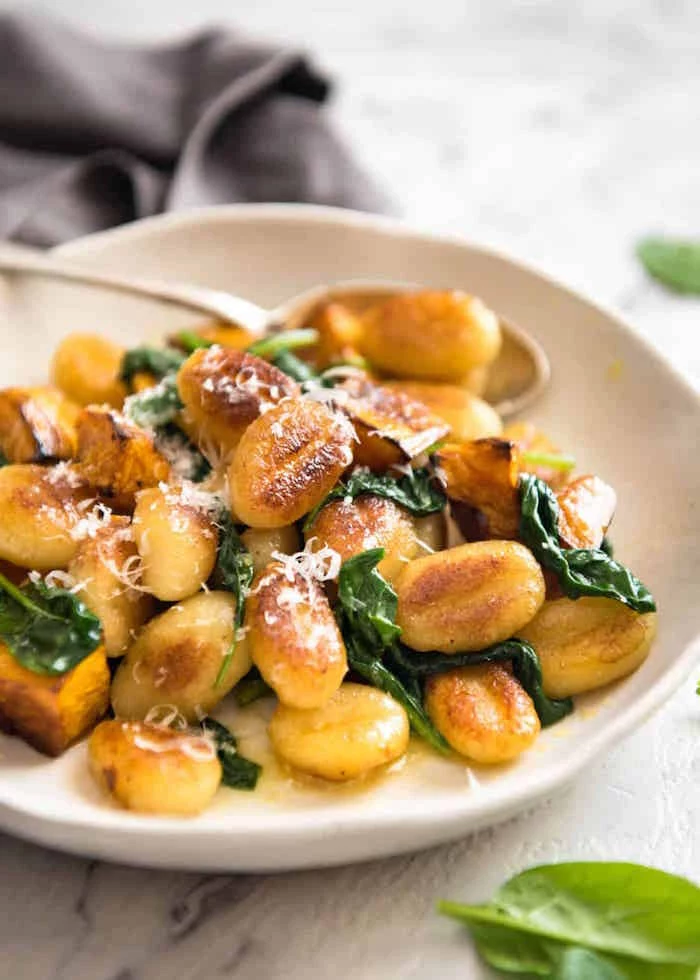
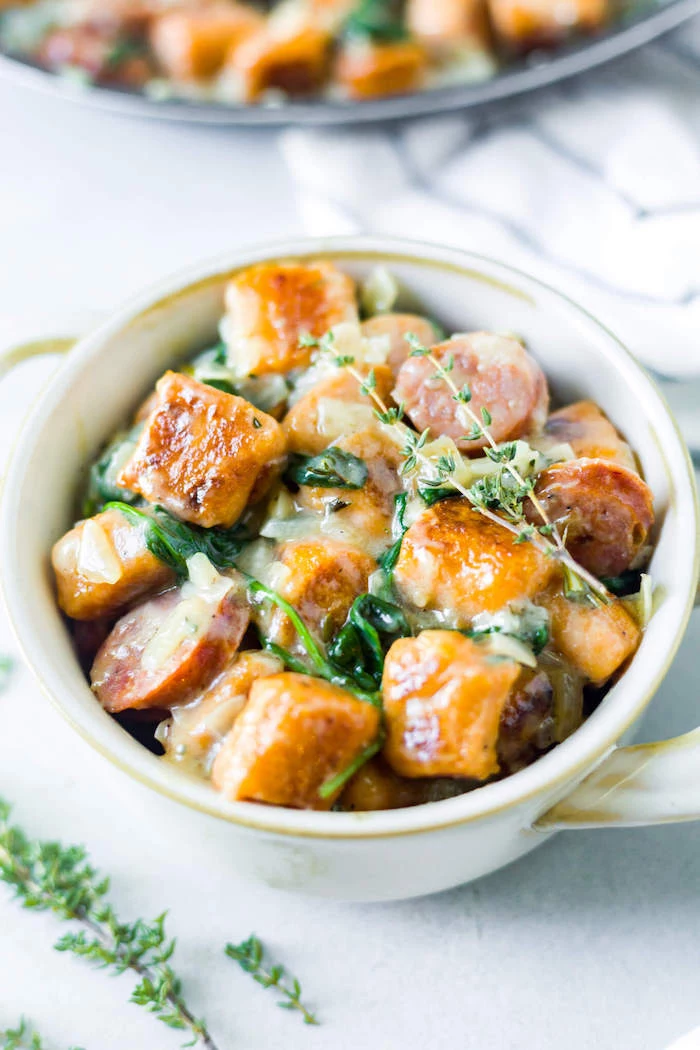
For the Minimalist: A simple fork is the most accessible tool. Press and gently roll the piece of dough down the tines to create classic ridges.
For the Traditionalist: A wooden gnocchi board, or ‘rigagnocchi’, is designed for this exact purpose. The deeper, wider grooves make it easy to create a perfect hollow and defined pattern with a quick flick of the thumb.
Both work beautifully; the board is just a bit more efficient and consistent.
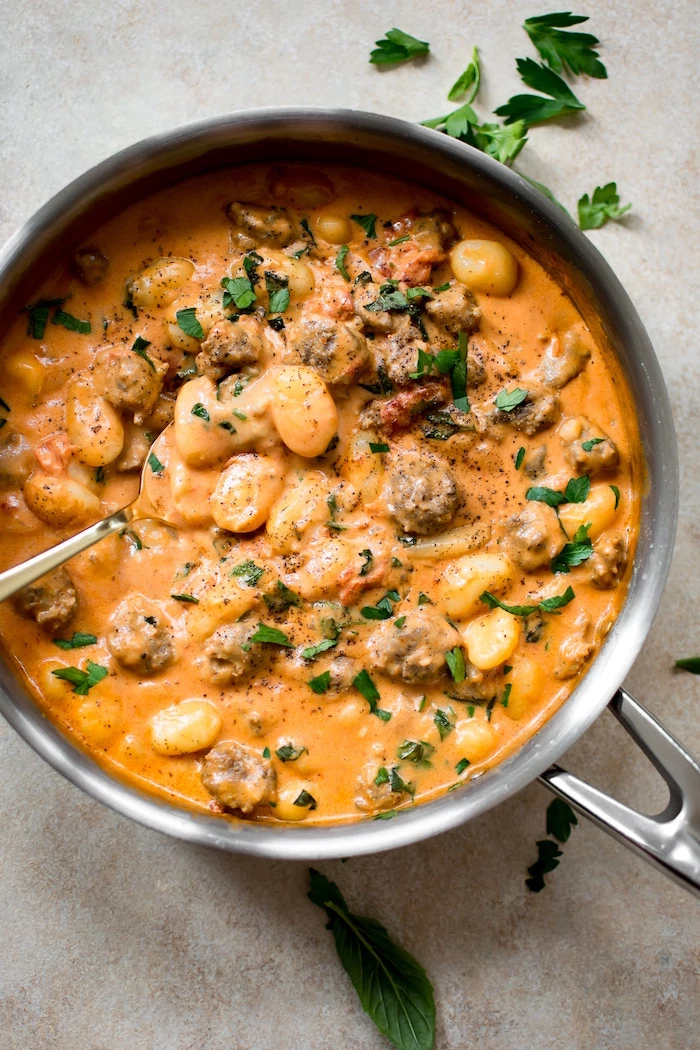
Don’t just re-boil them! Leftover cooked gnocchi are fantastic when pan-fried. Heat a skillet with olive oil or butter, add the gnocchi in a single layer, and cook until golden brown and slightly crispy on all sides. Toss with herbs or leftover sauce for a quick, delicious meal that feels brand new.
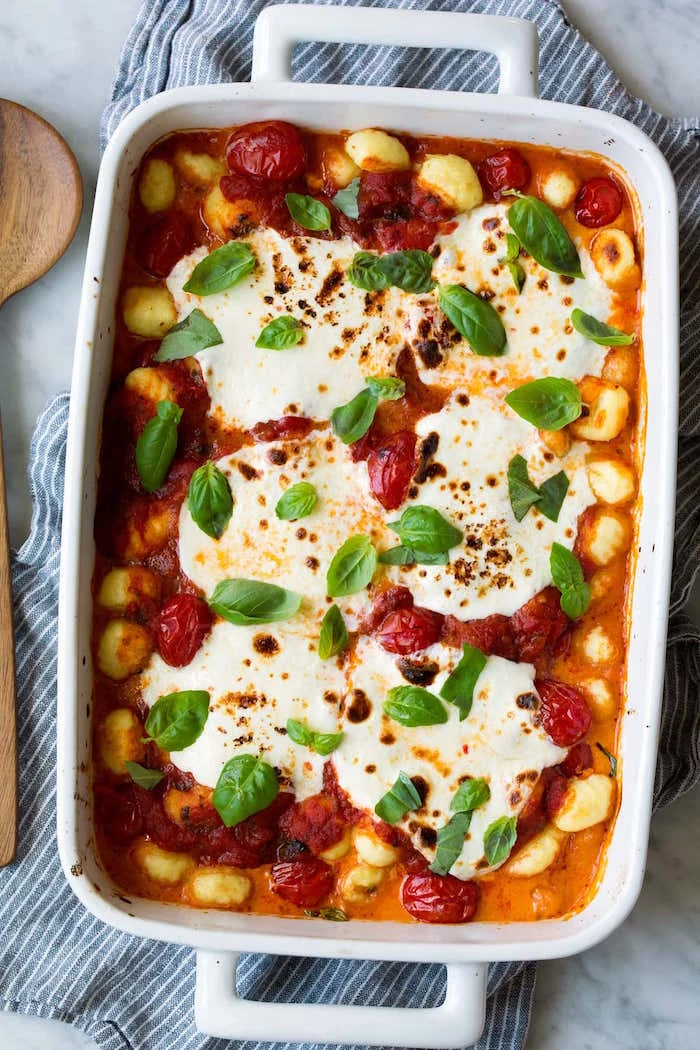
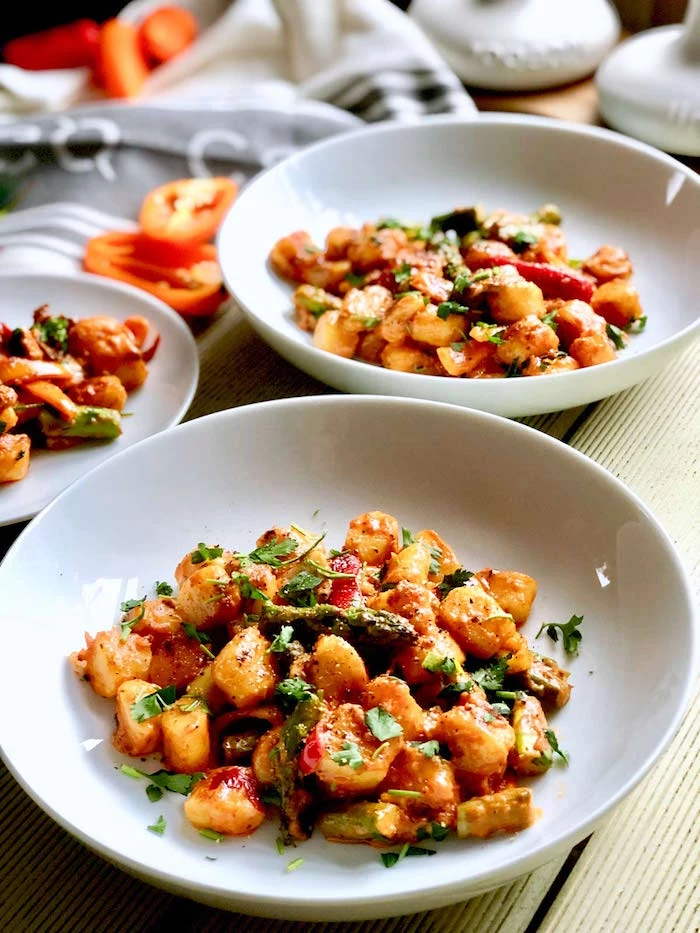
In Italy, gnocchi are often considered a ‘primo piatto,’ or first course, served in smaller portions than a main pasta dish. This tradition highlights their role as a rich, satisfying prelude to a meat or fish course (‘secondo’).
Beyond the classic tomato or sage butter, consider these exciting pairings:
- Creamy Gorgonzola and Walnut: A bold, classic Northern Italian combination.
- Spicy Sausage and Kale: As seen in the gallery, a hearty and flavorful one-pan meal.
- Roasted Red Pepper and Goat Cheese: A vibrant, tangy sauce that brings color and brightness.
- Simple Pesto: Let a high-quality basil pesto, like one from Genovese brand Rana, be the star.










